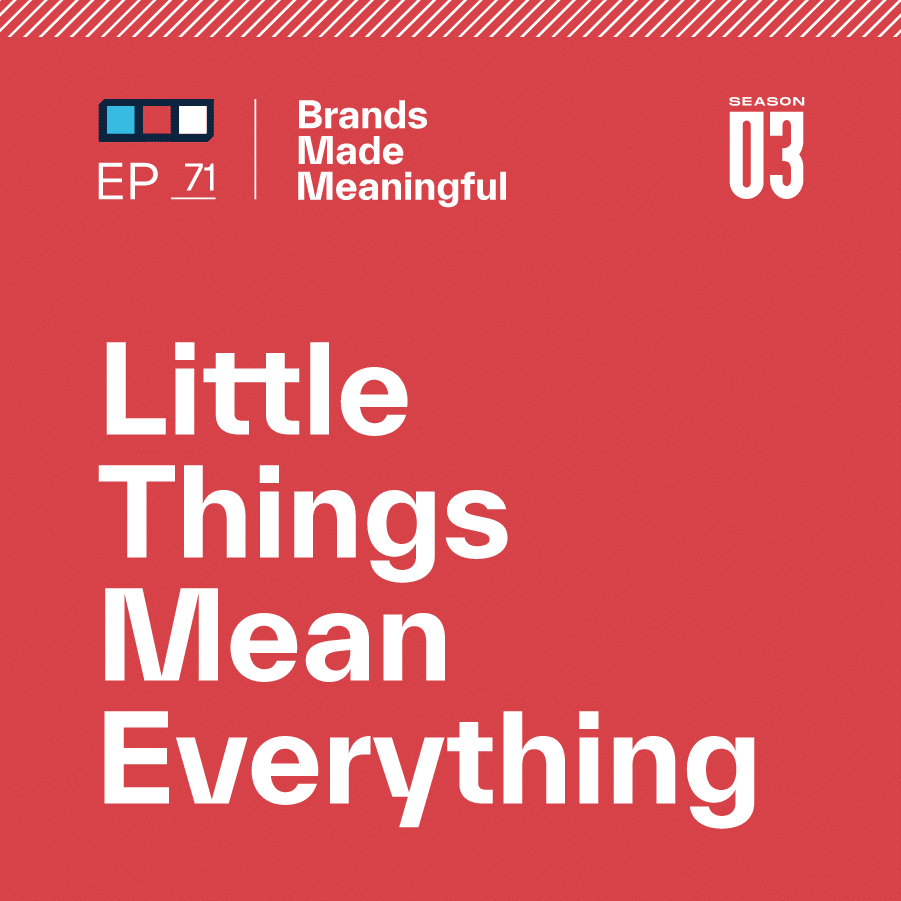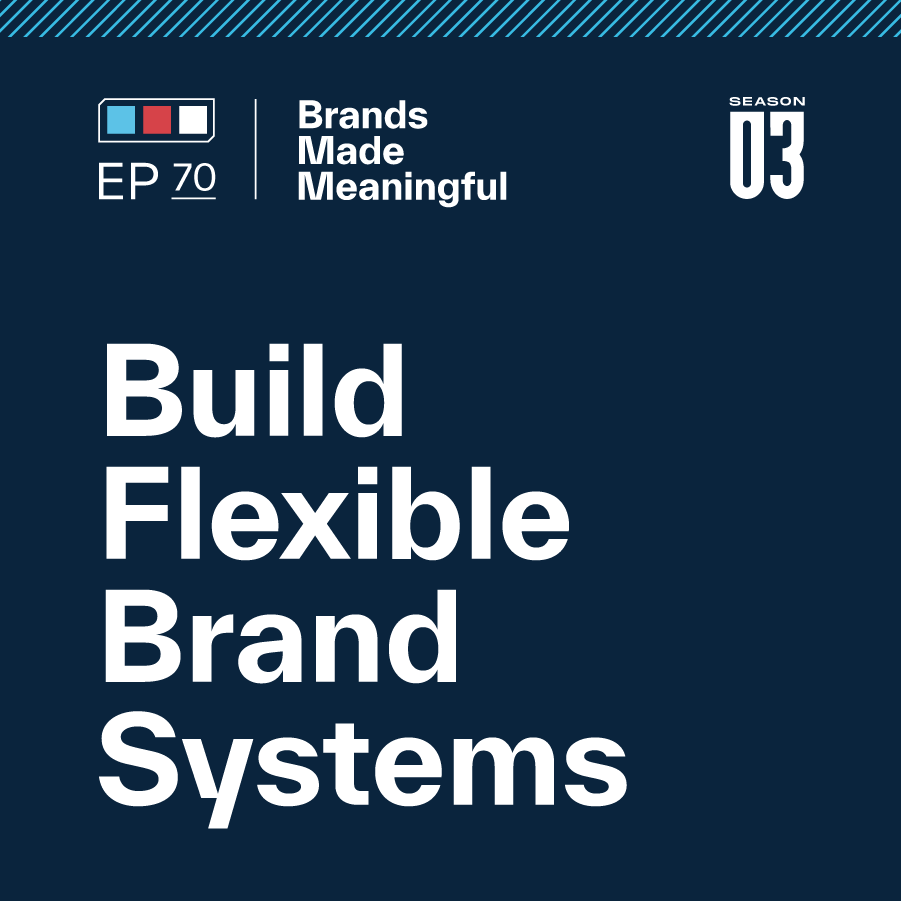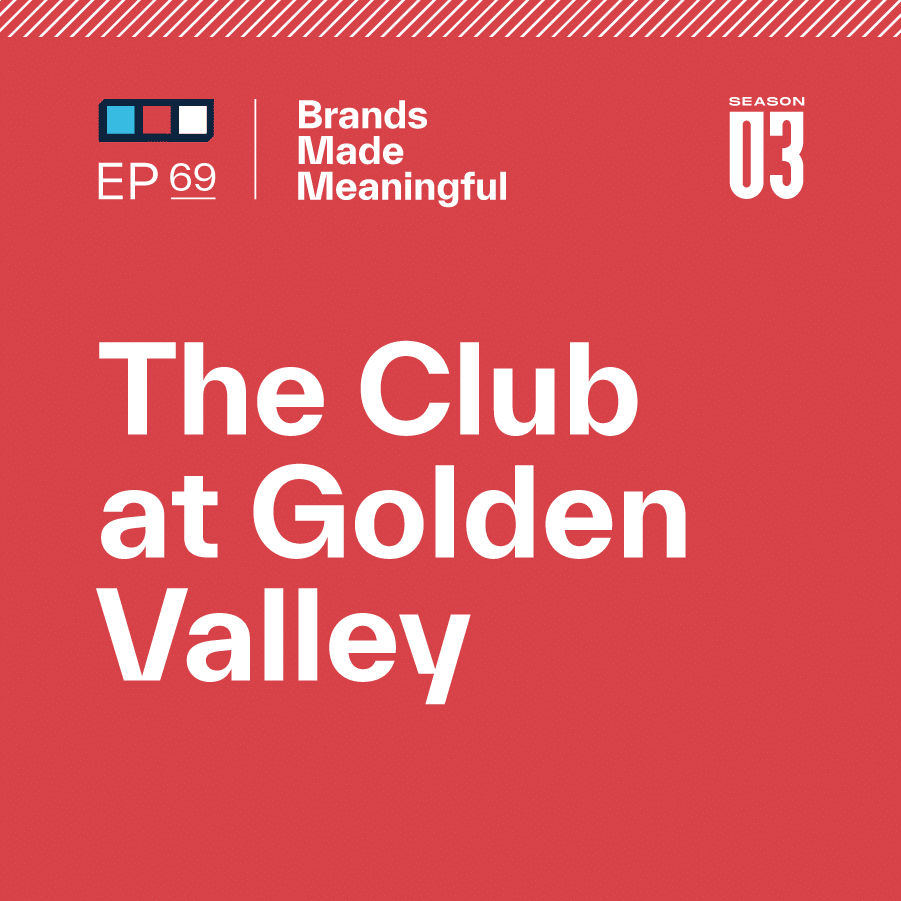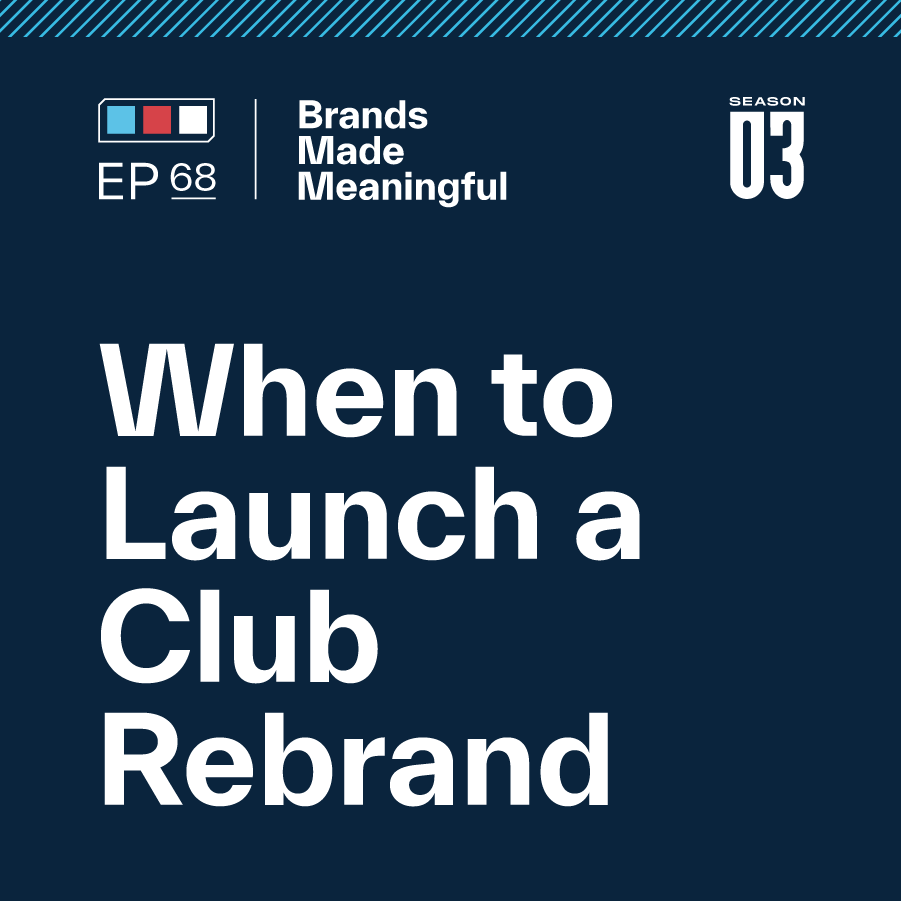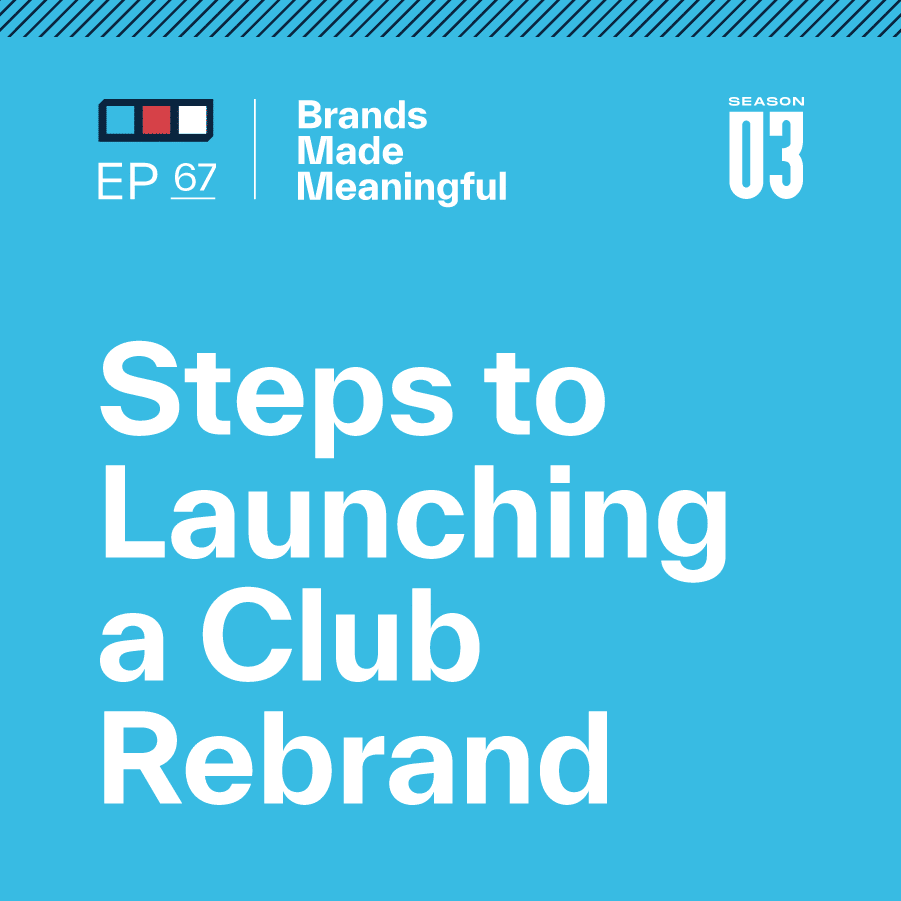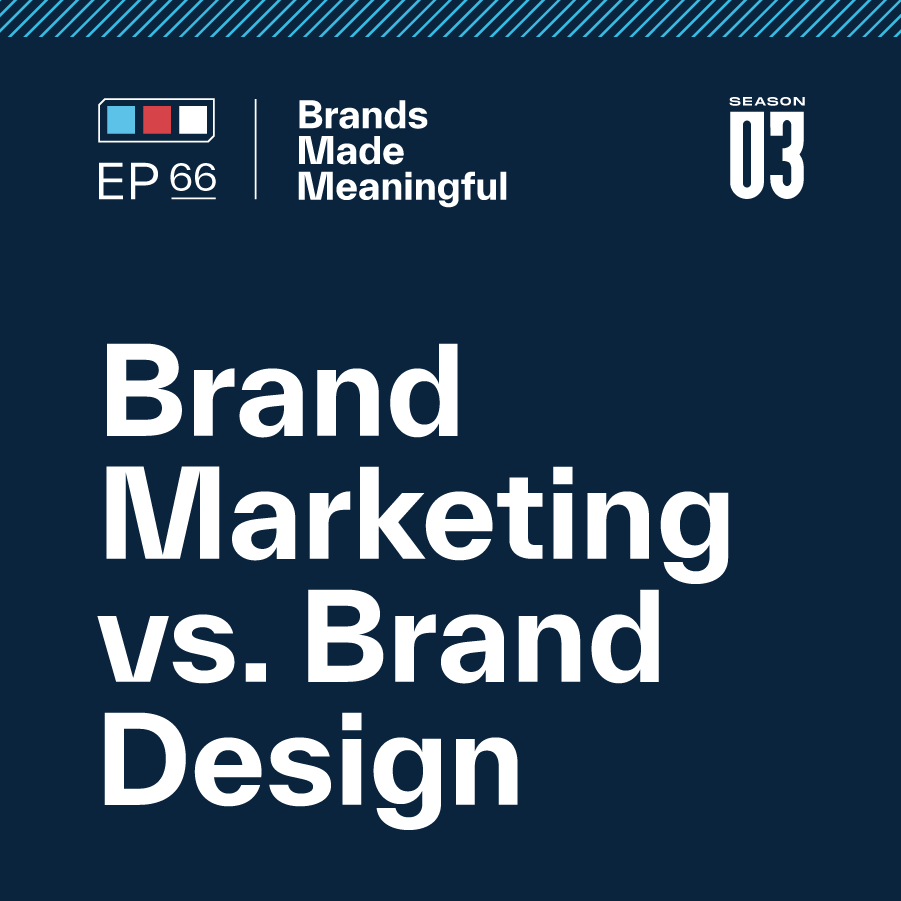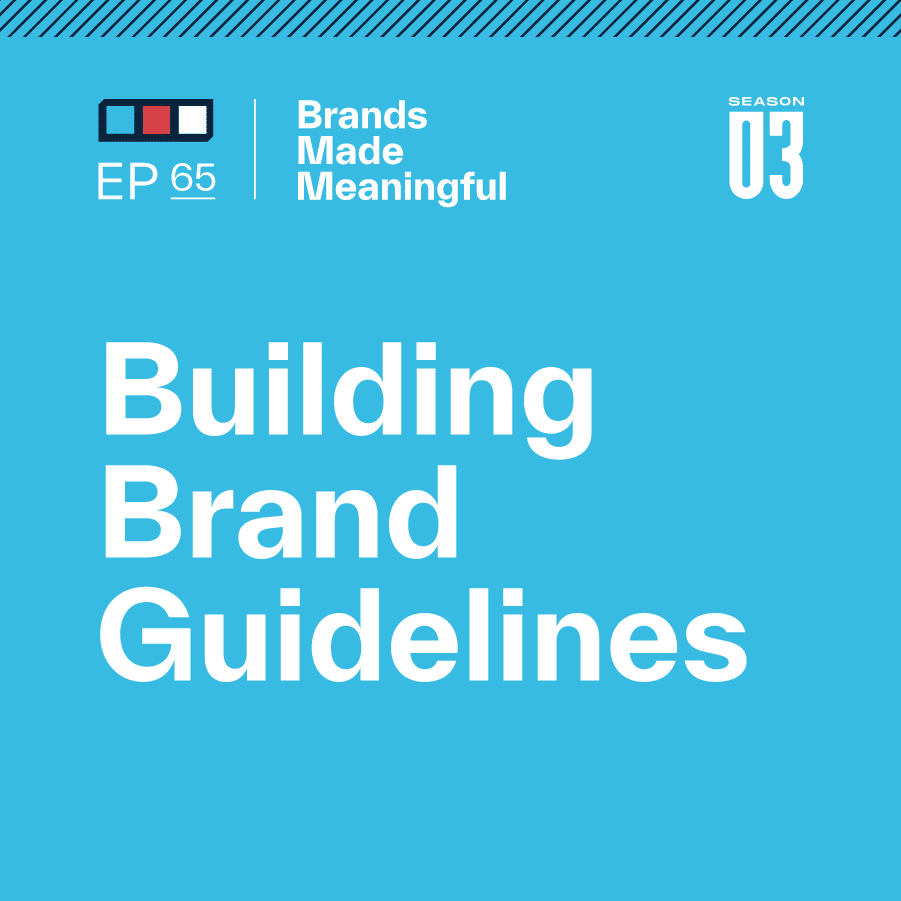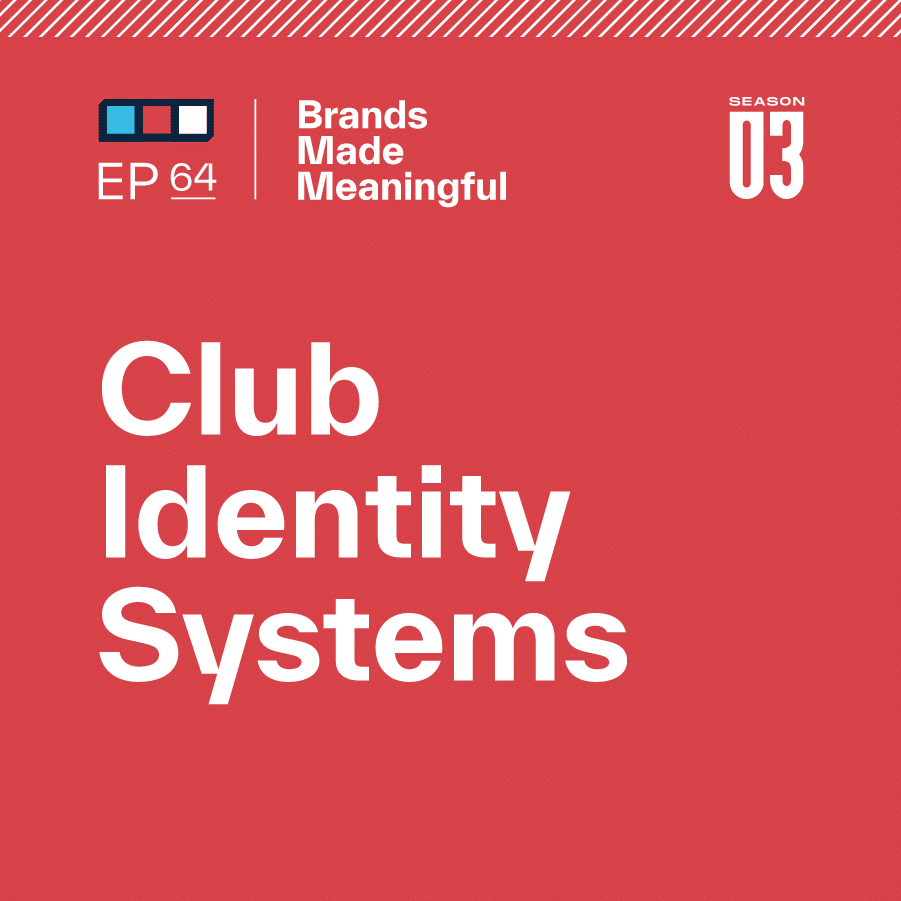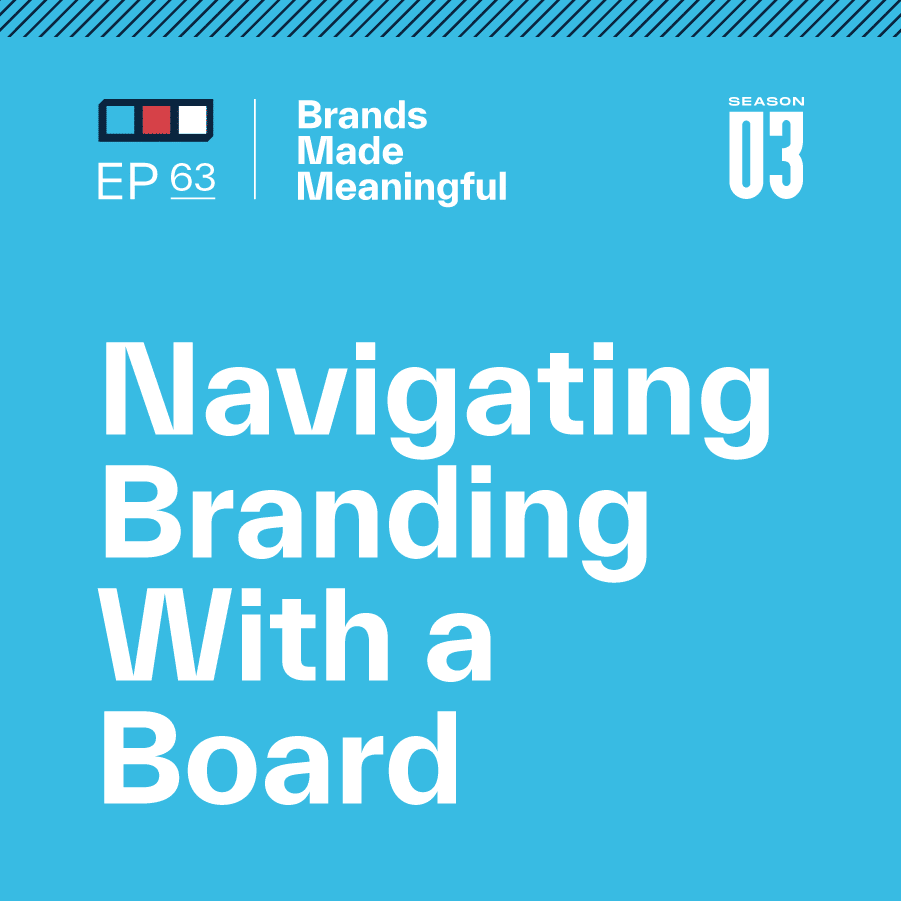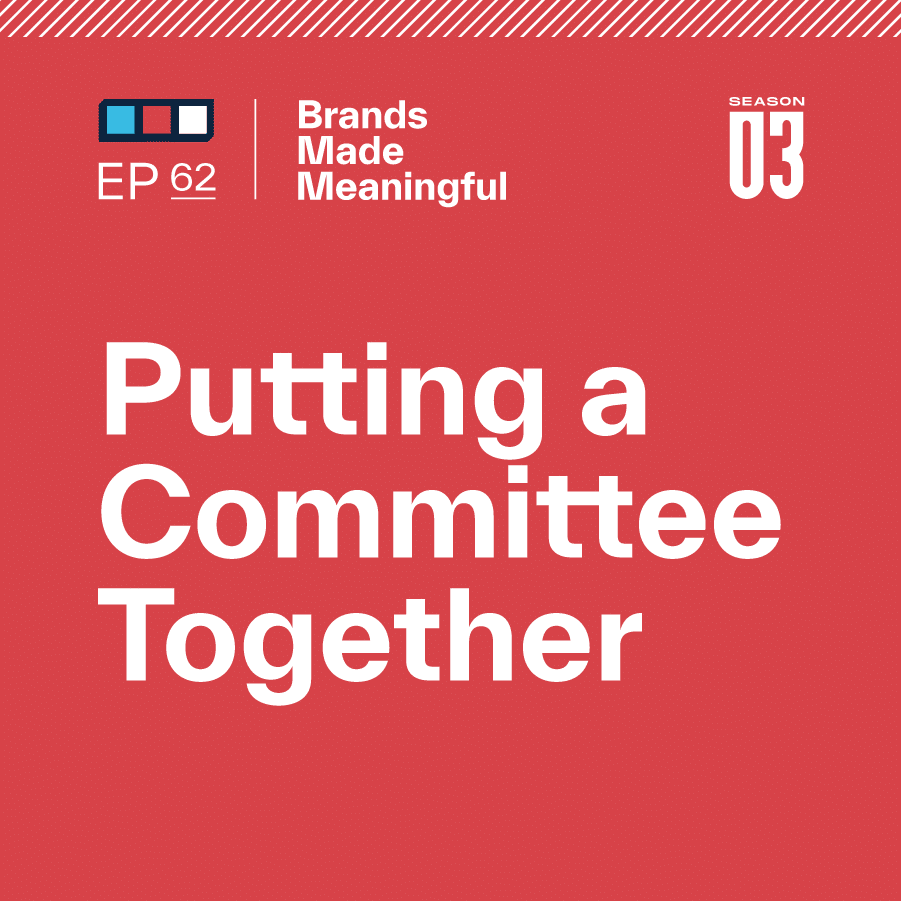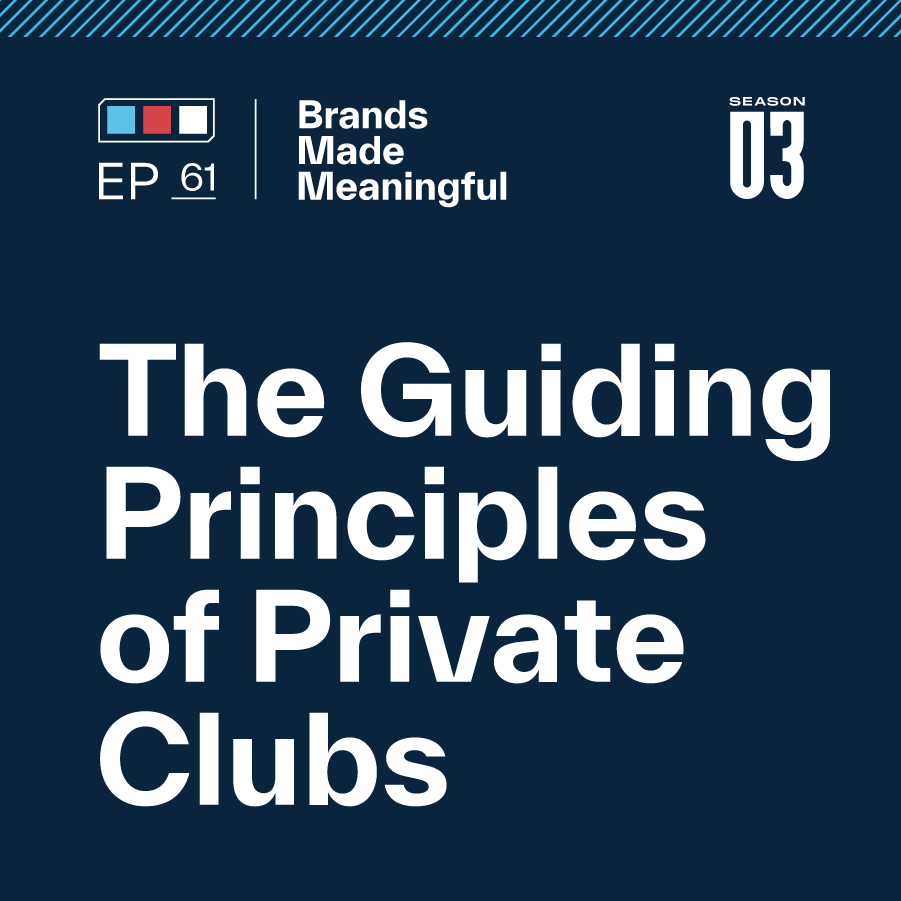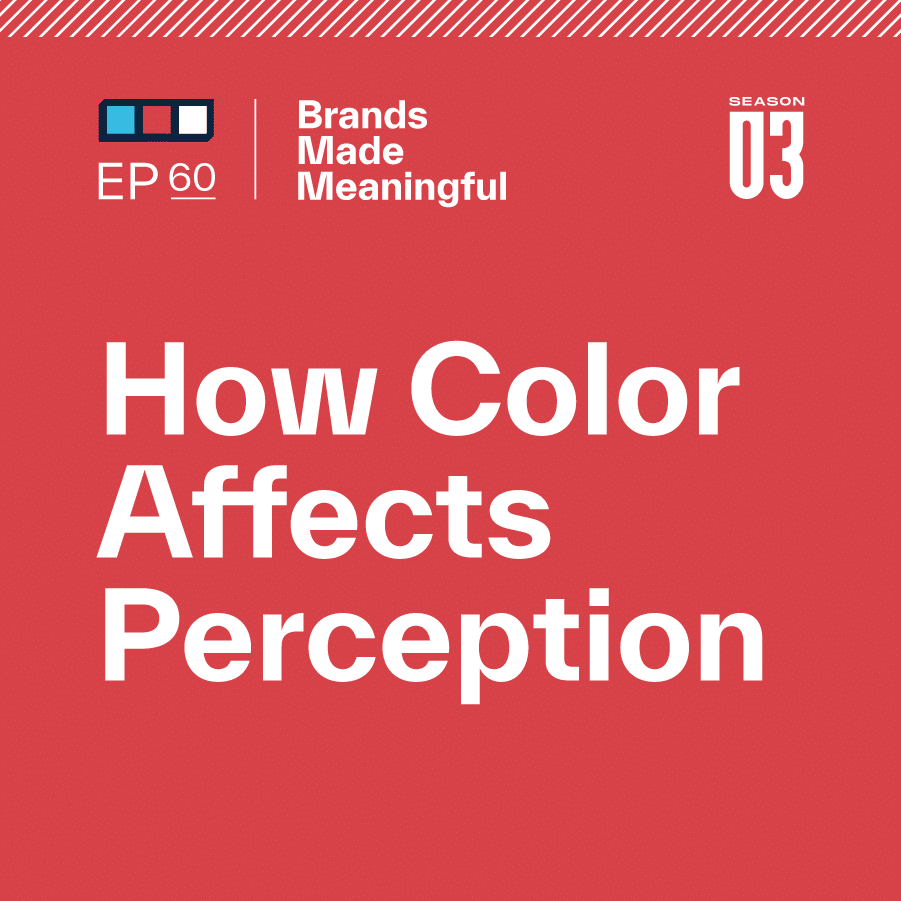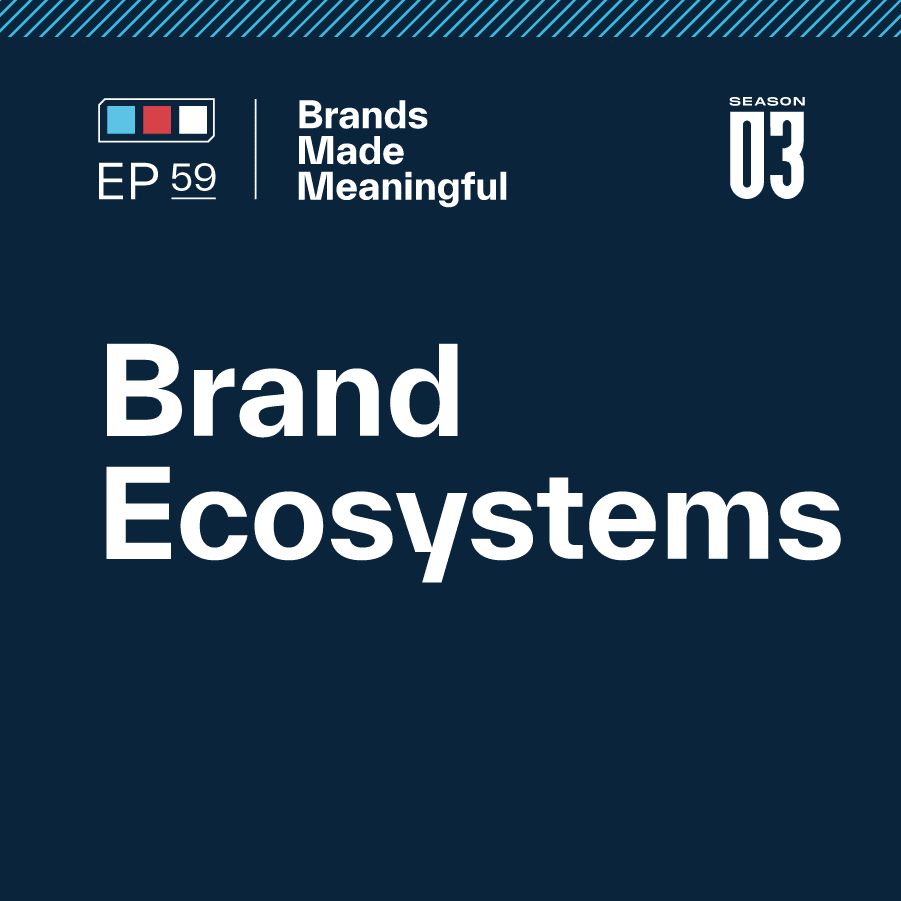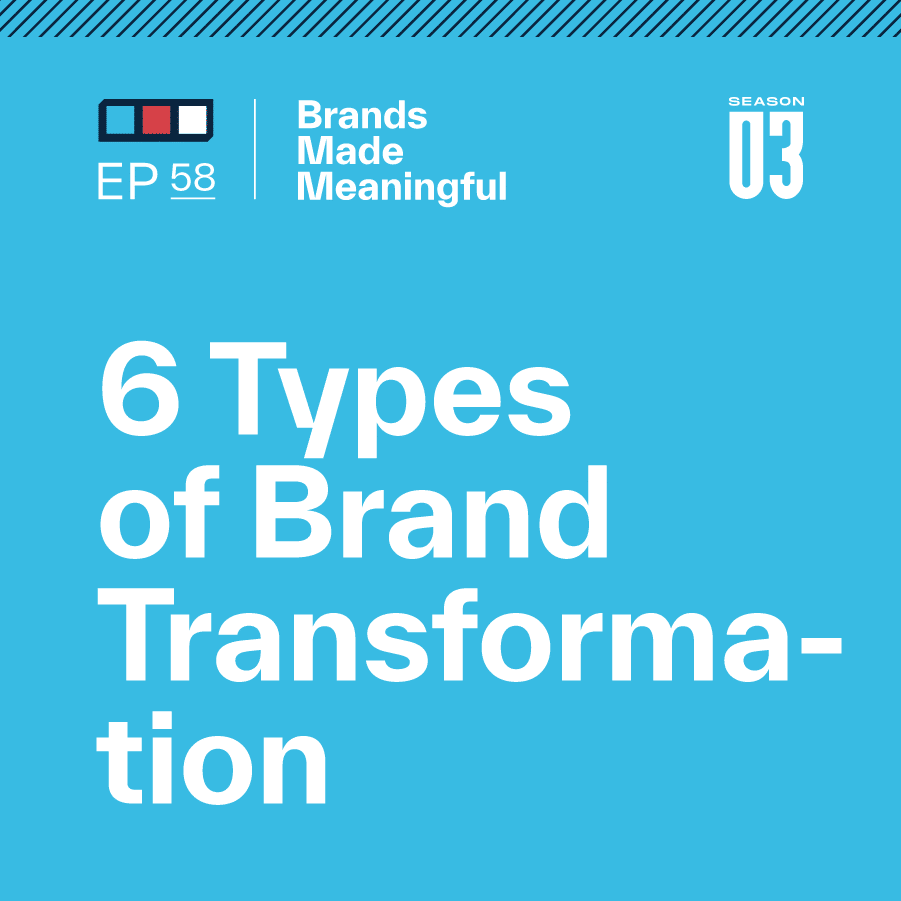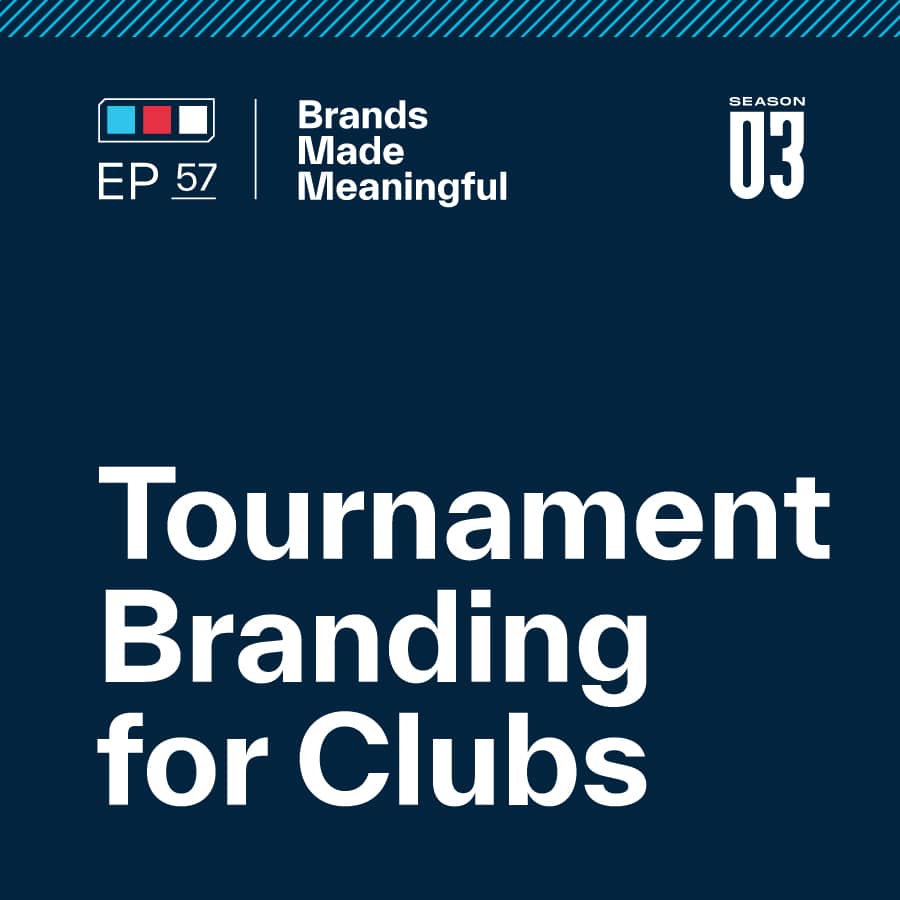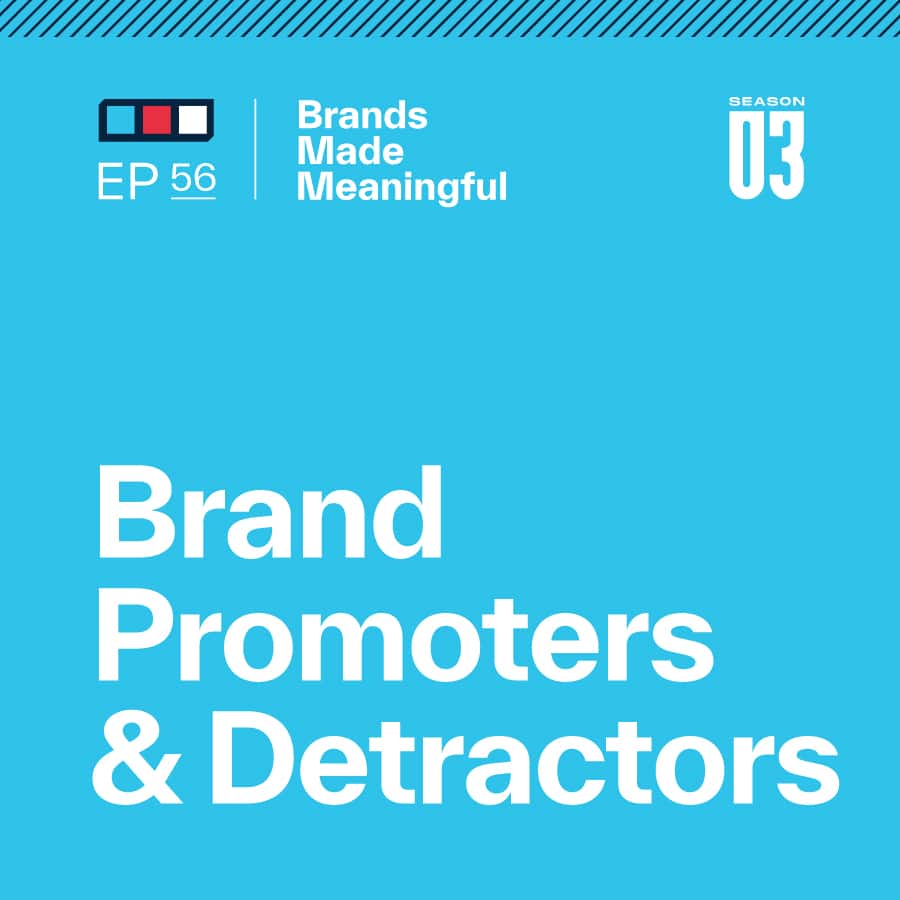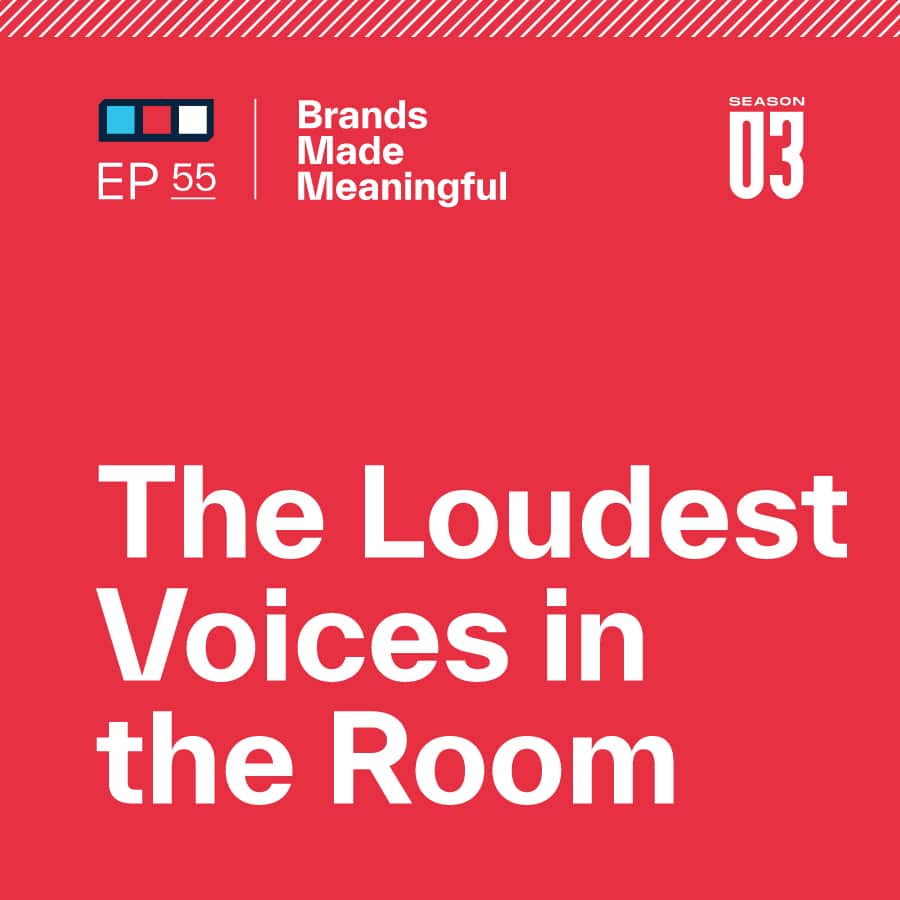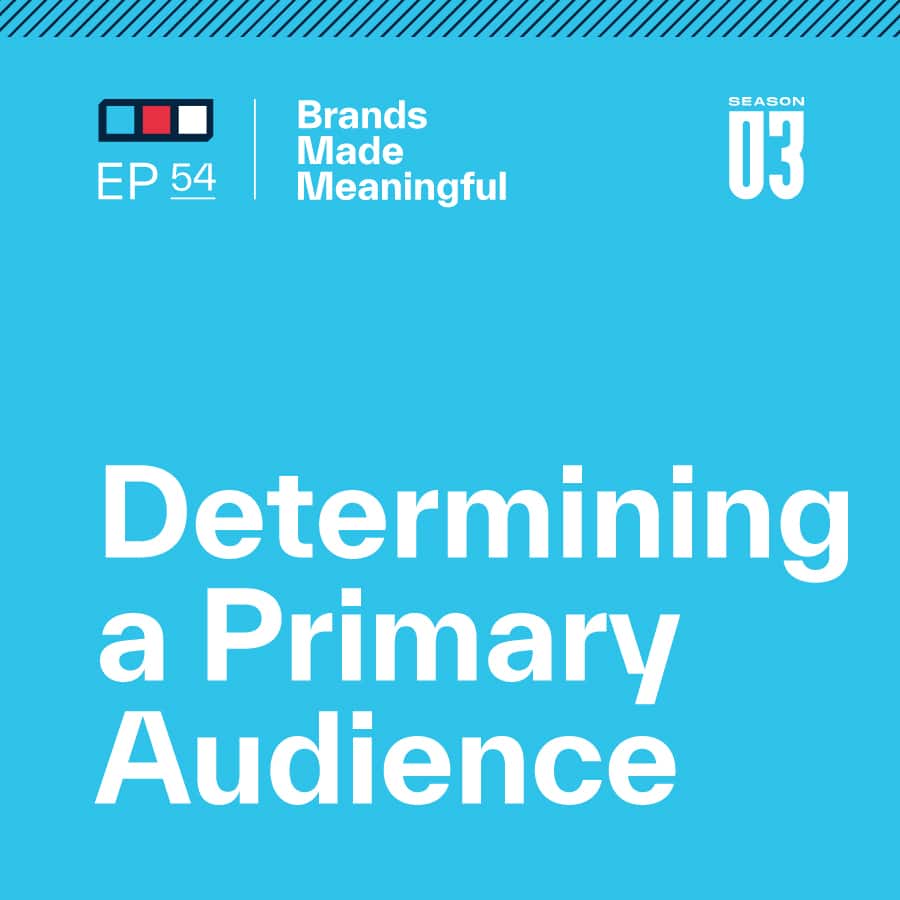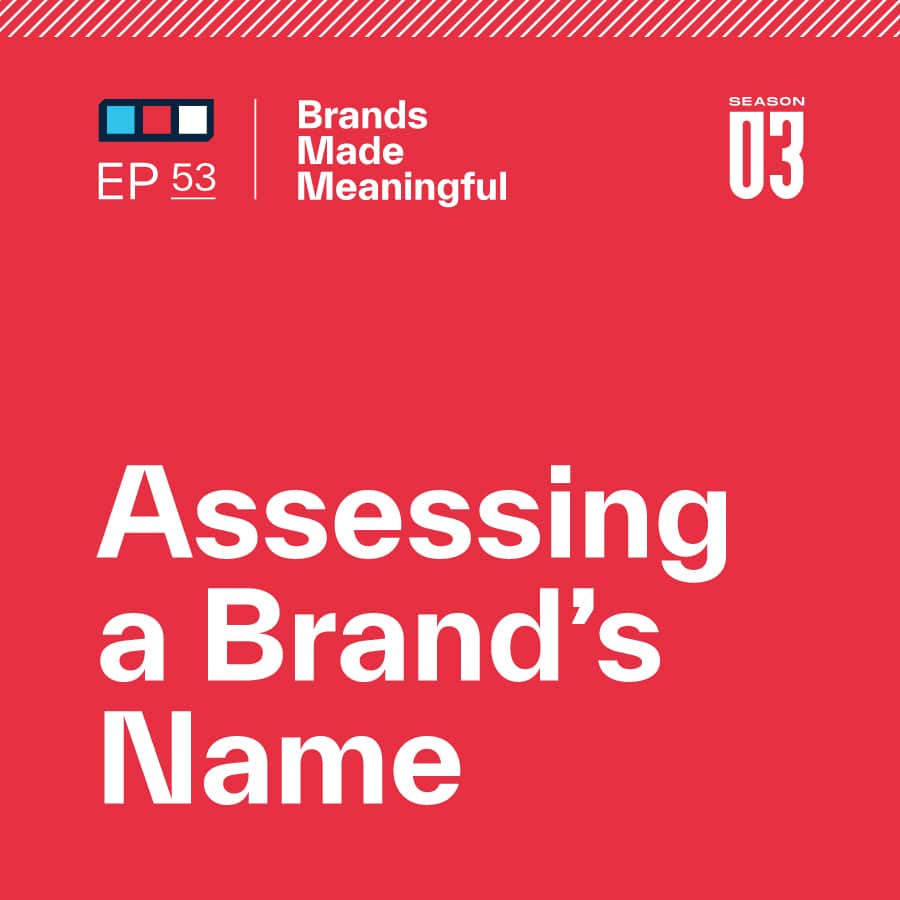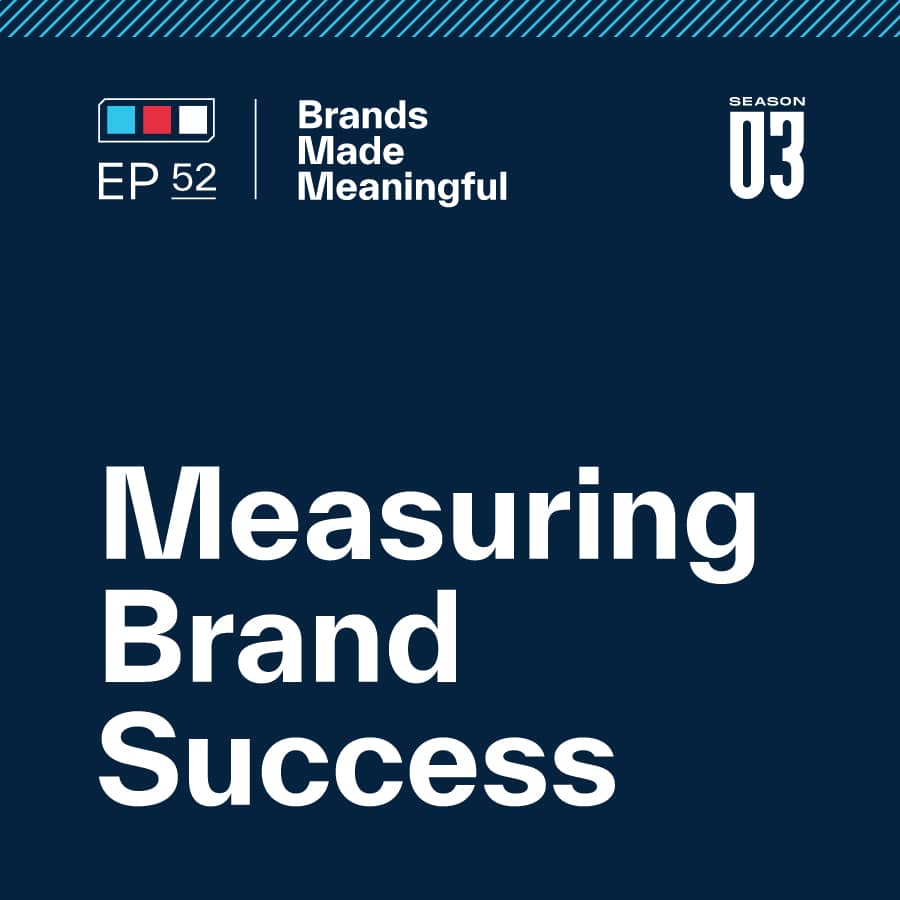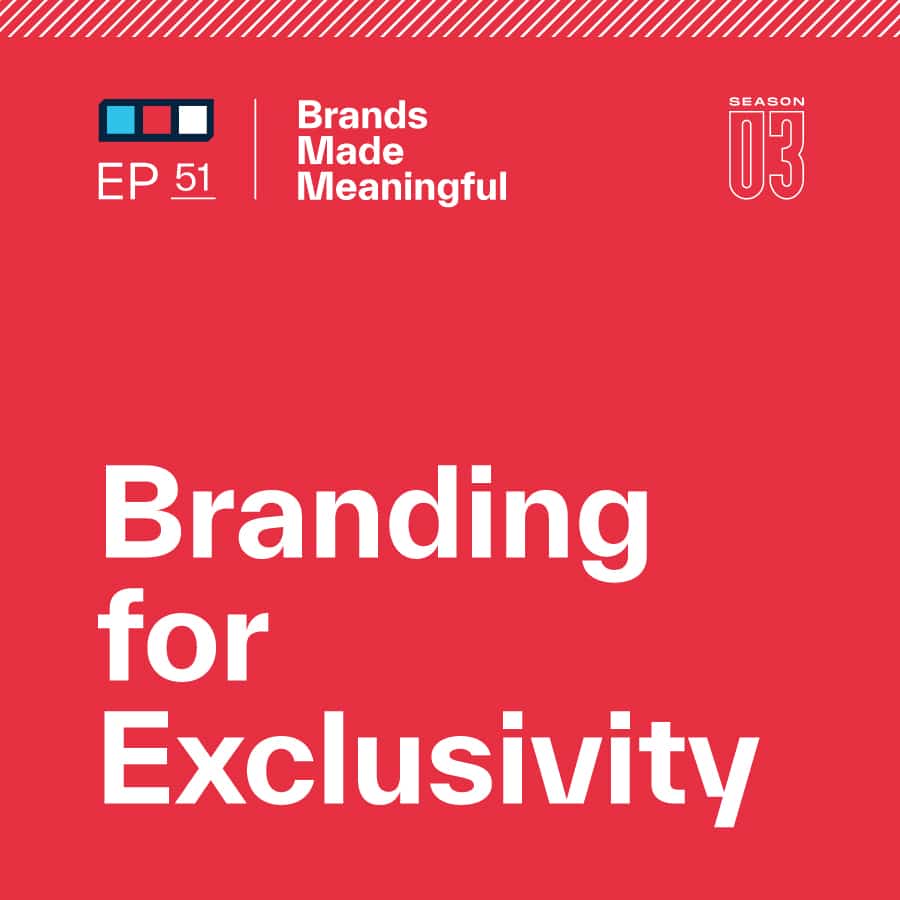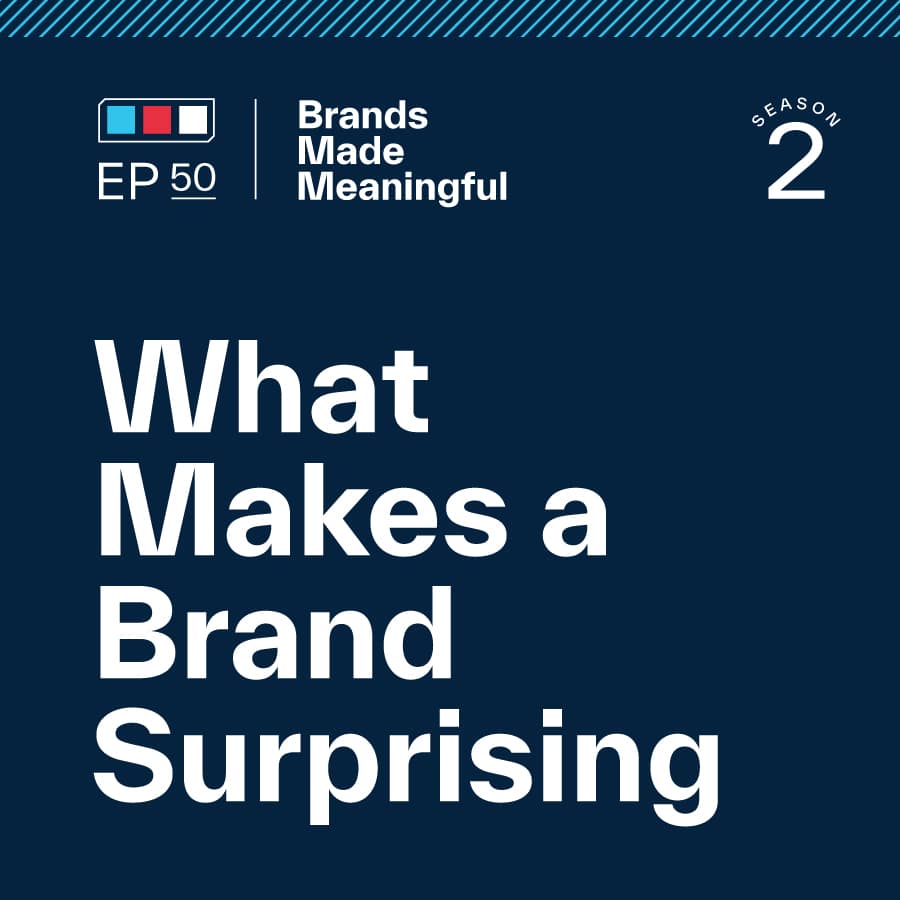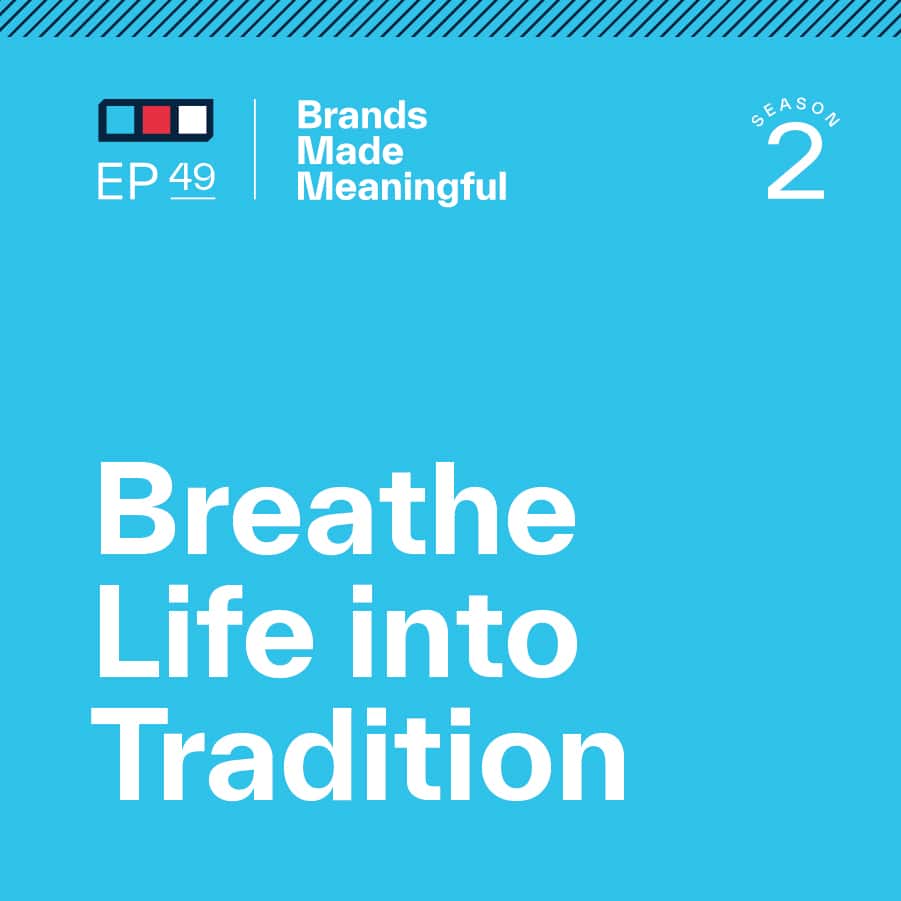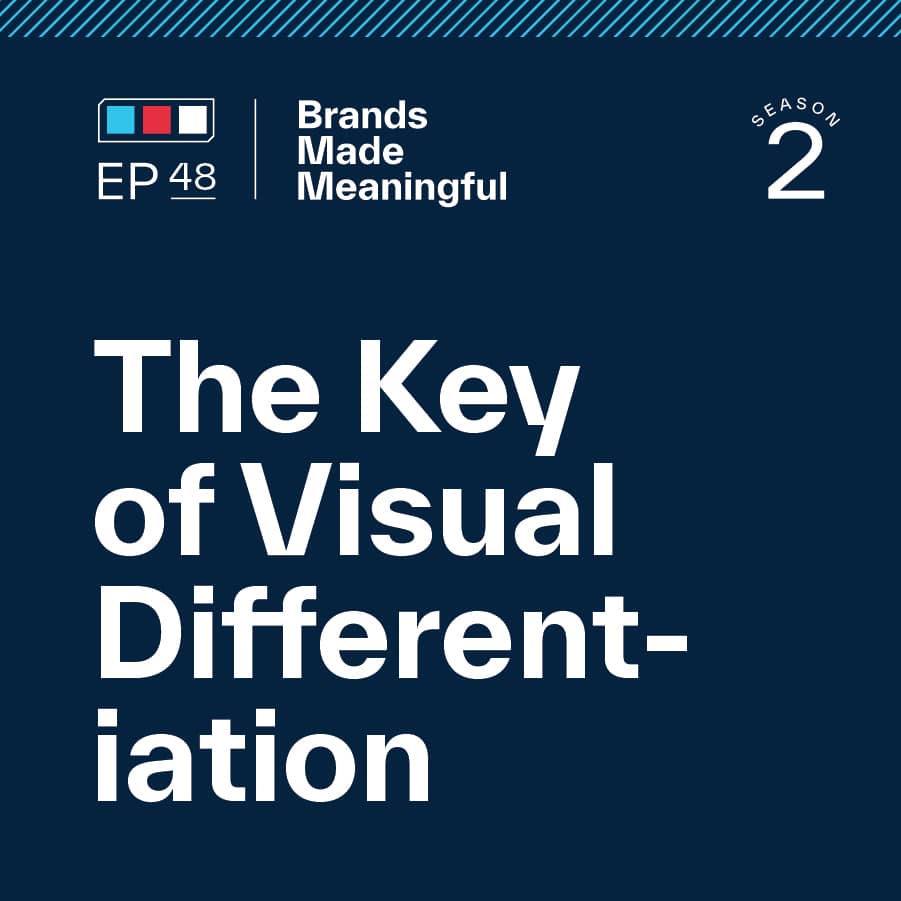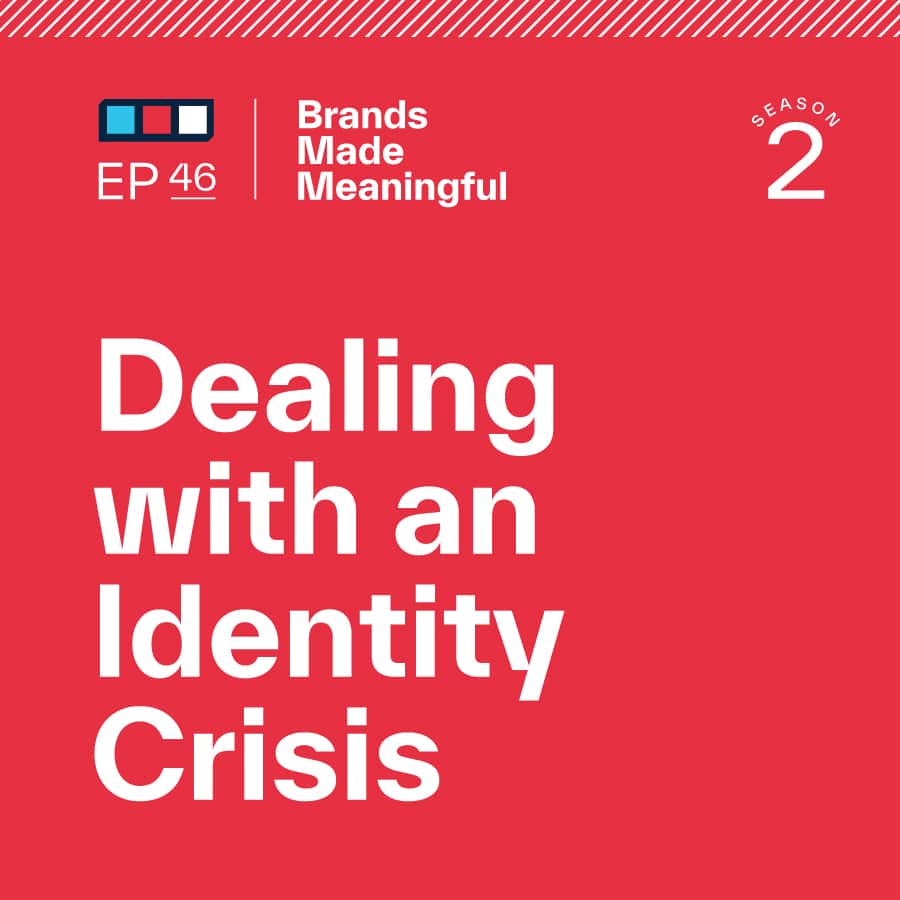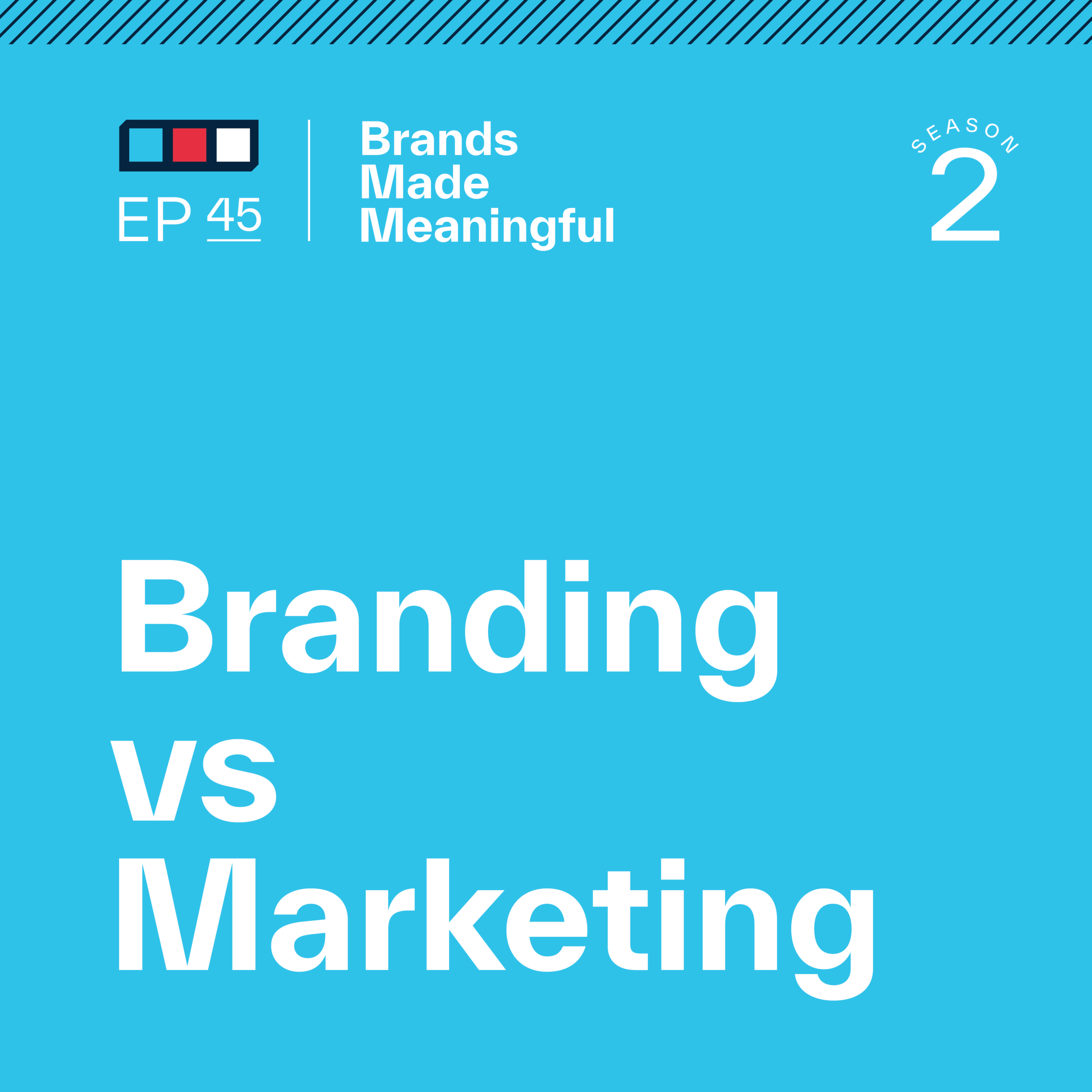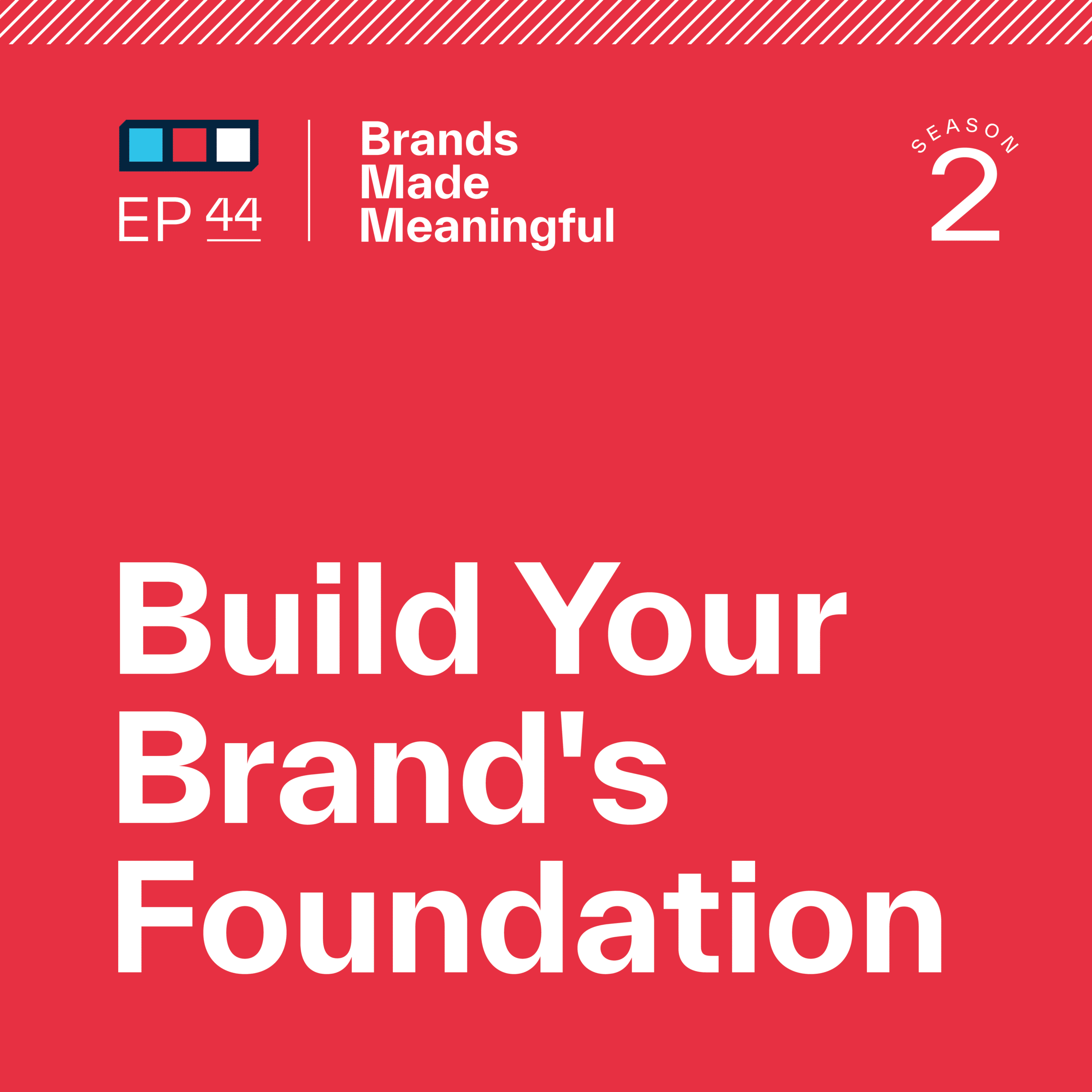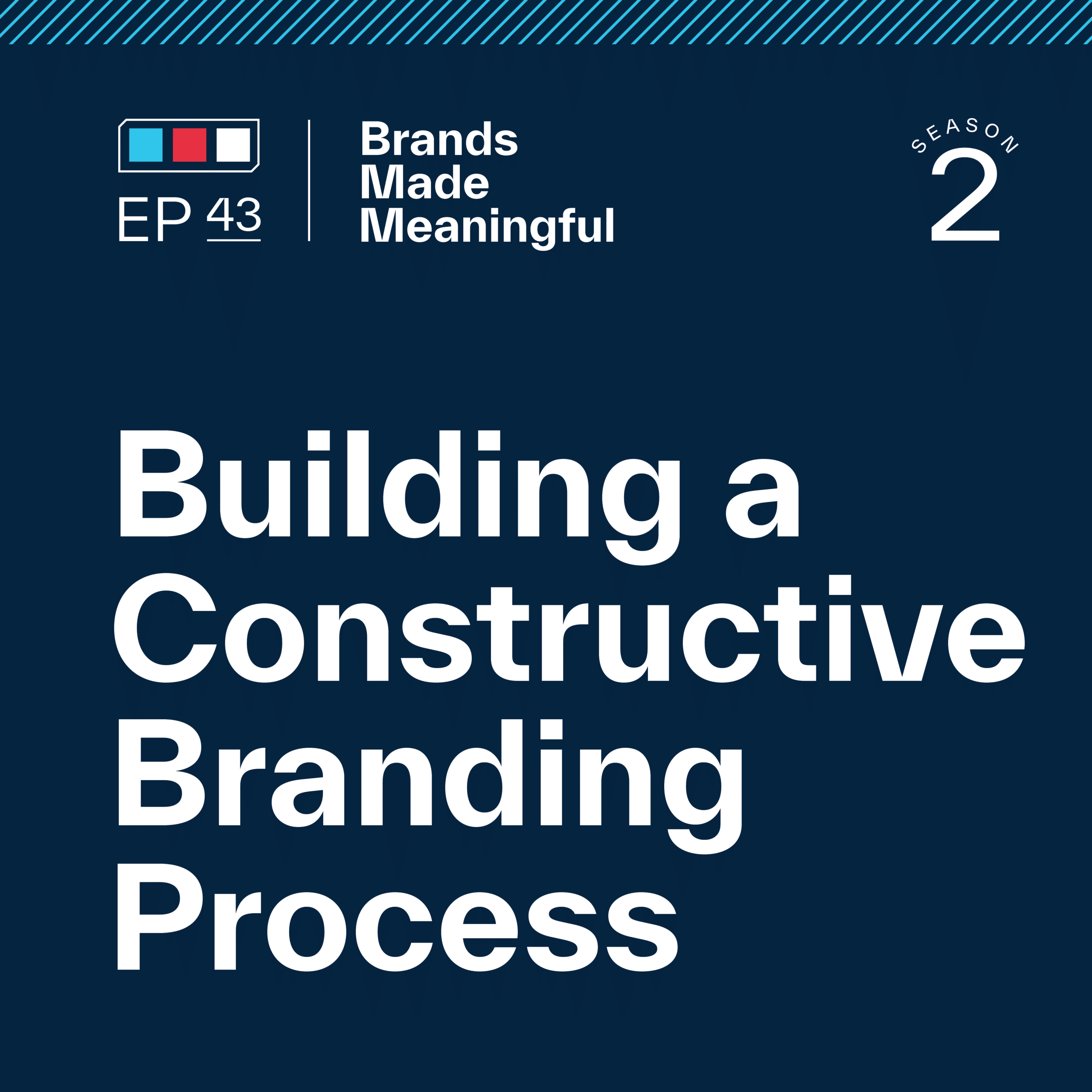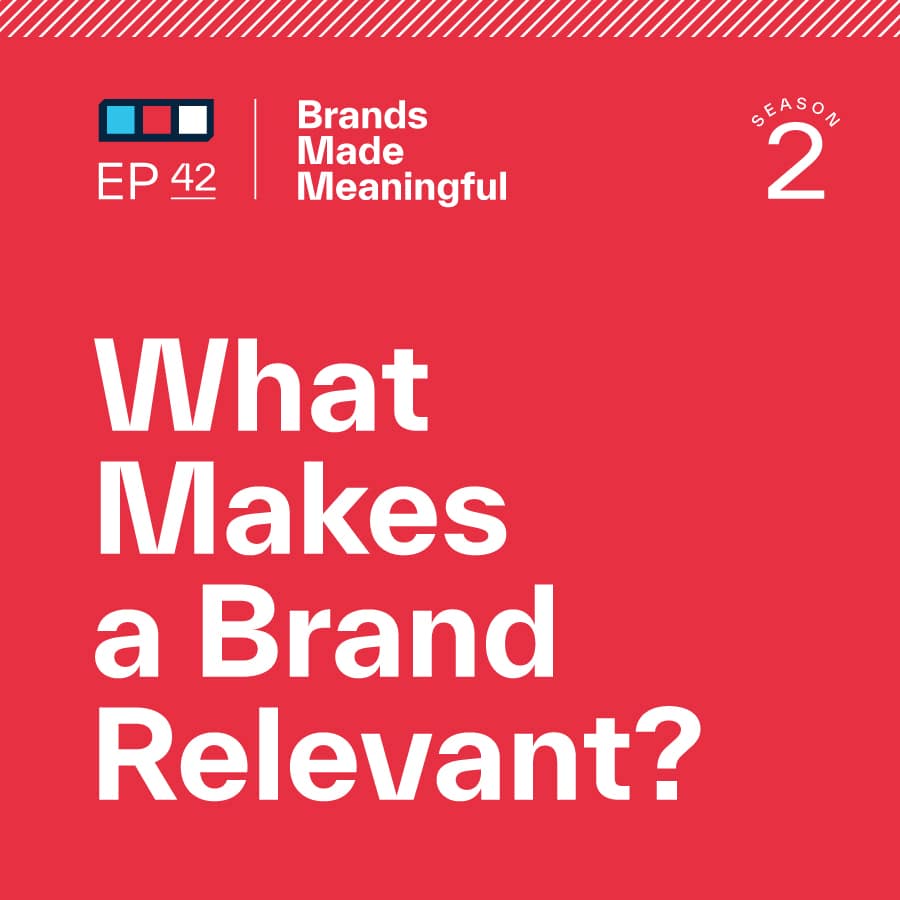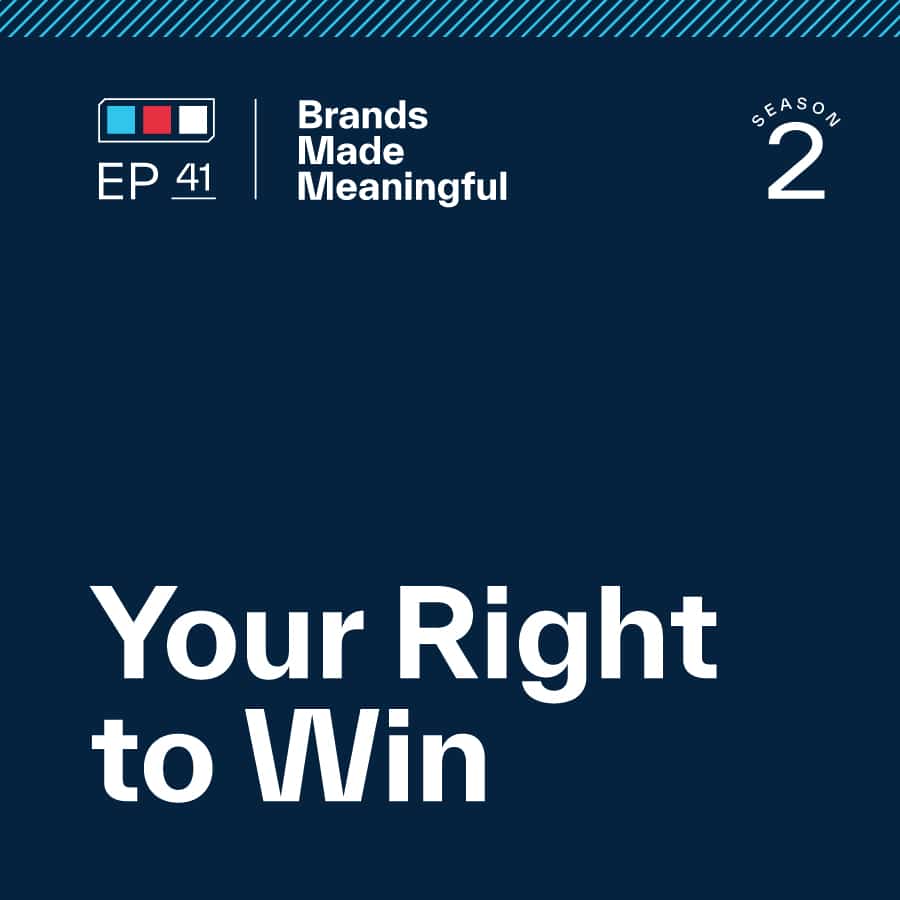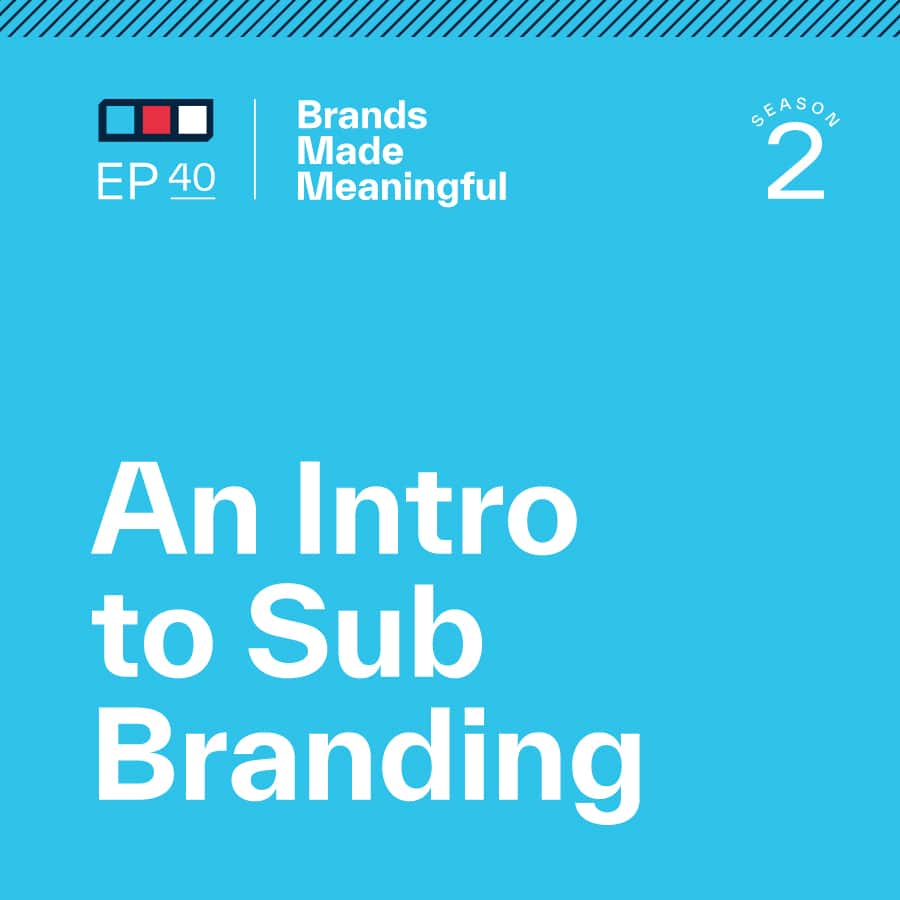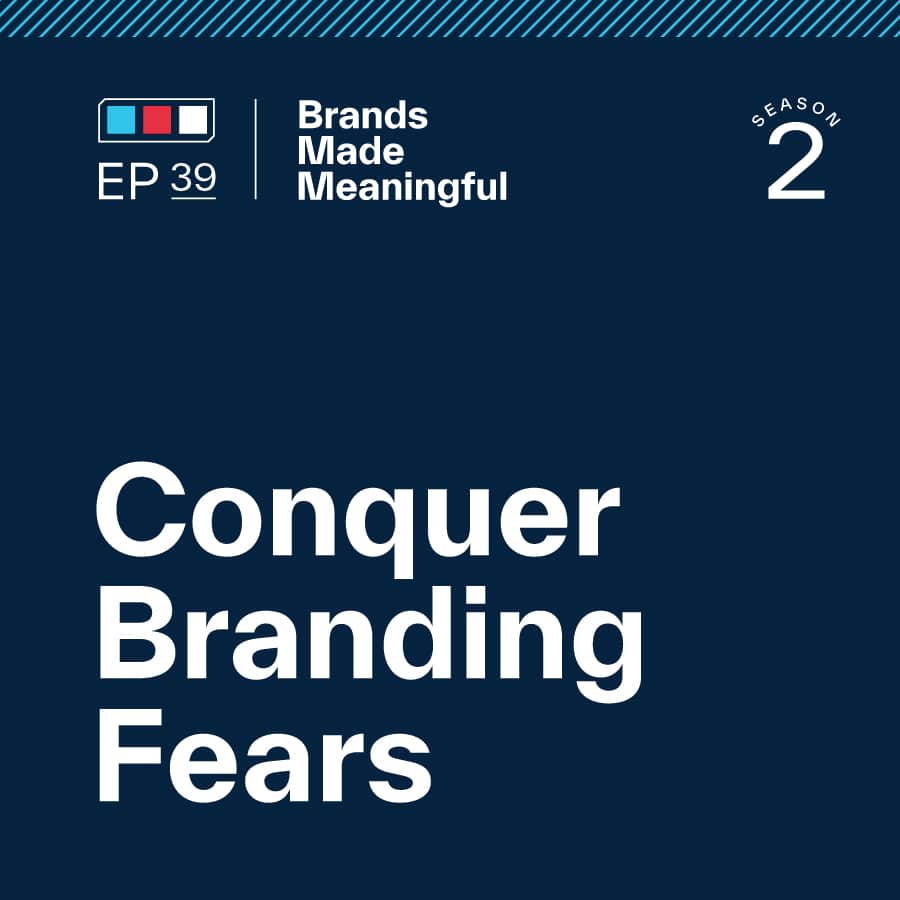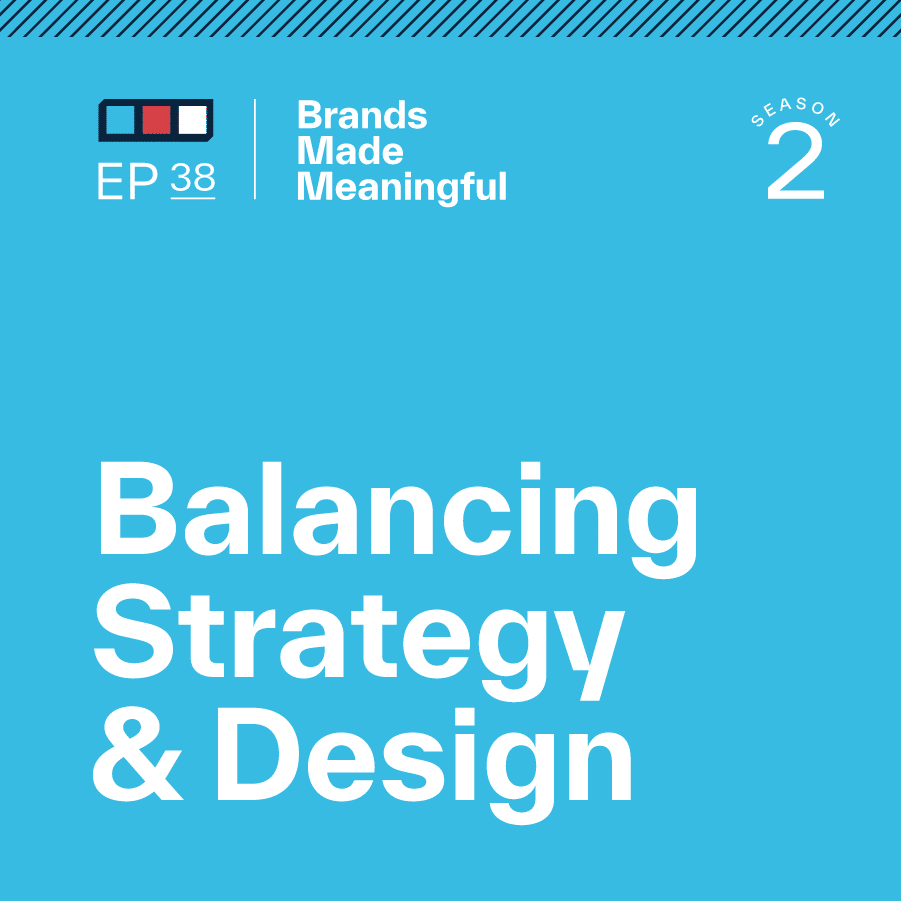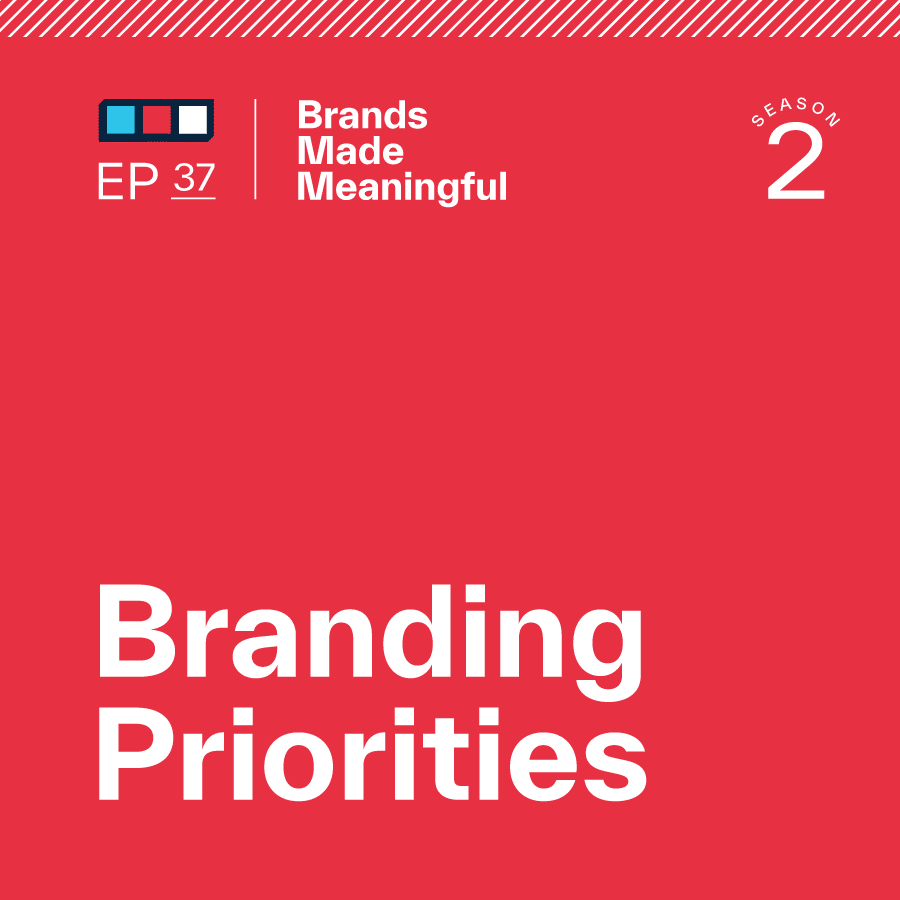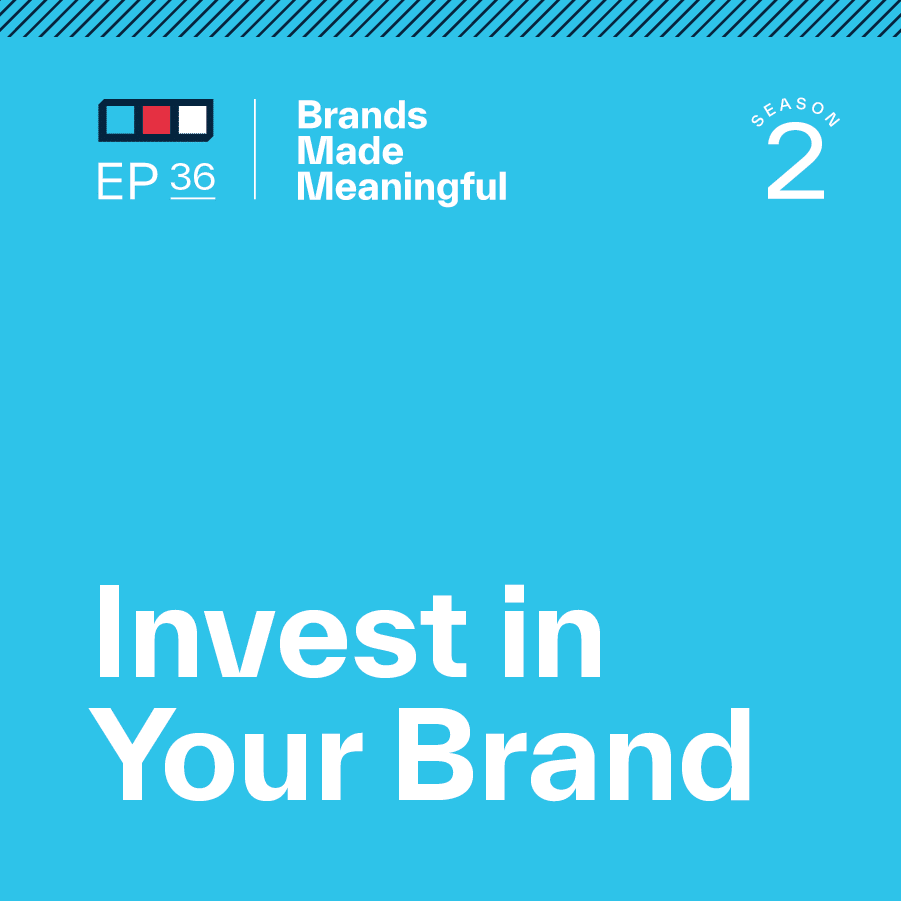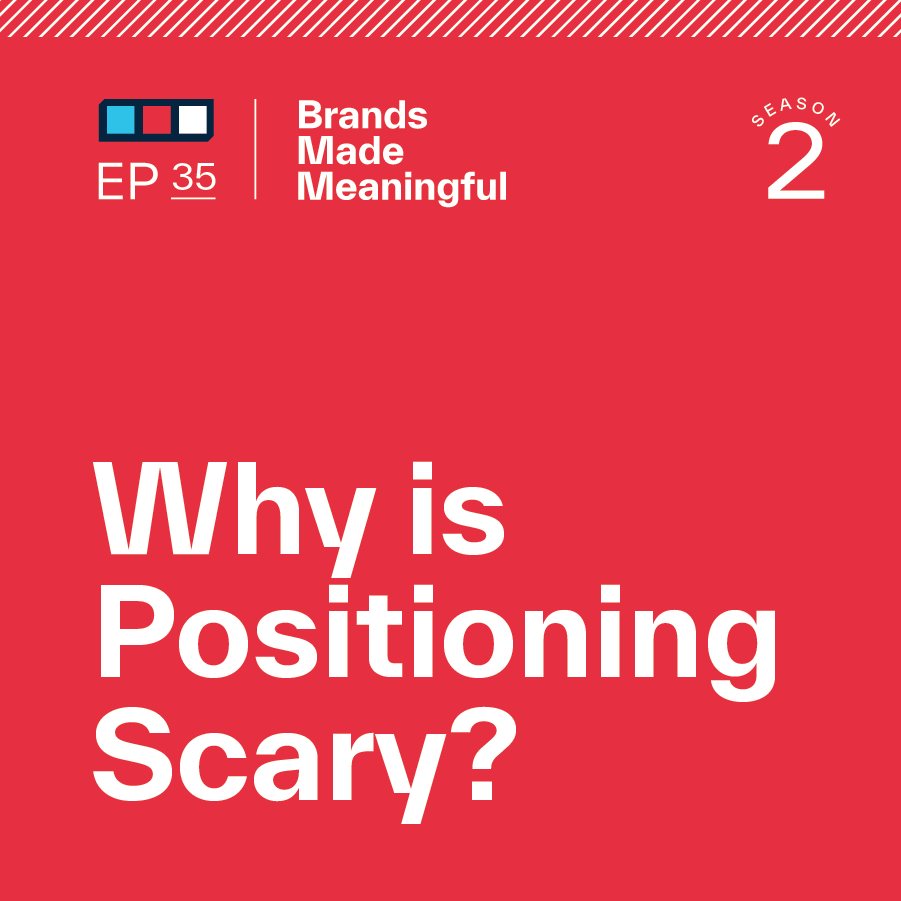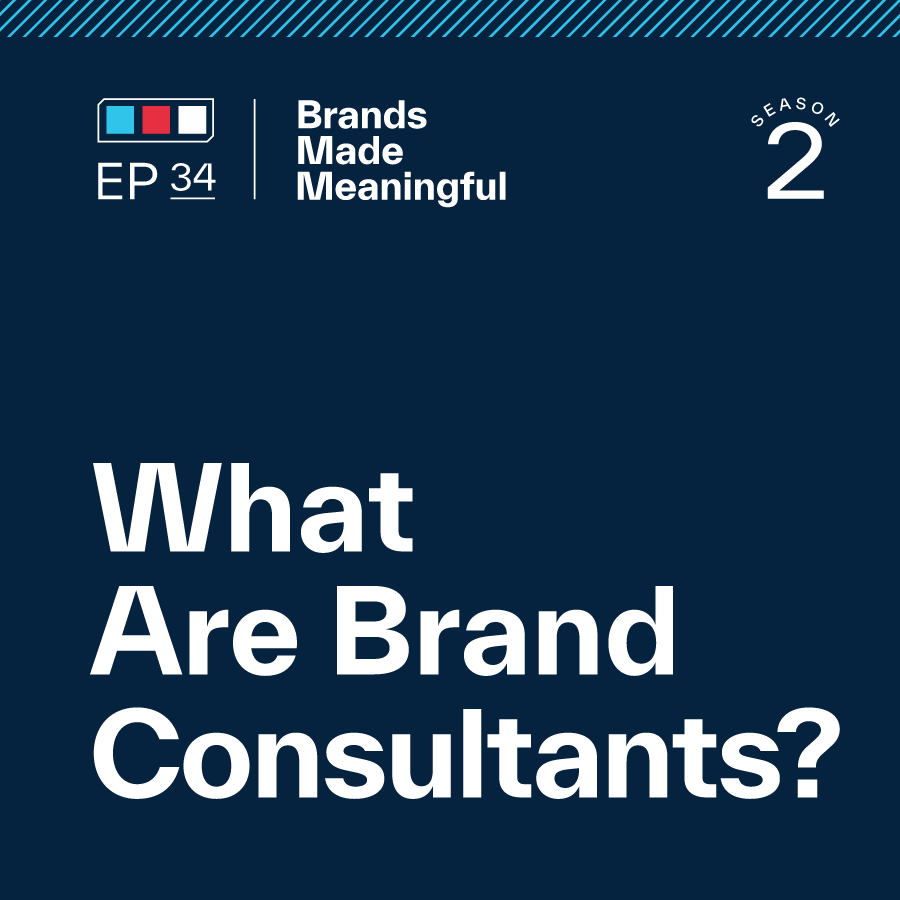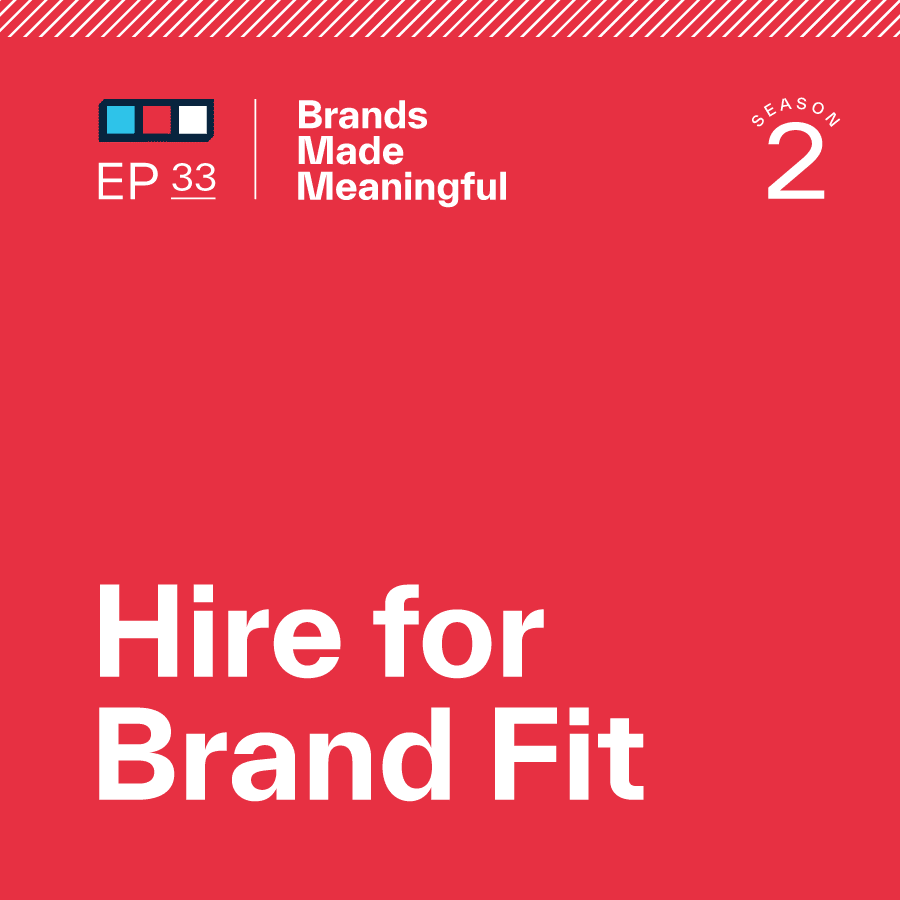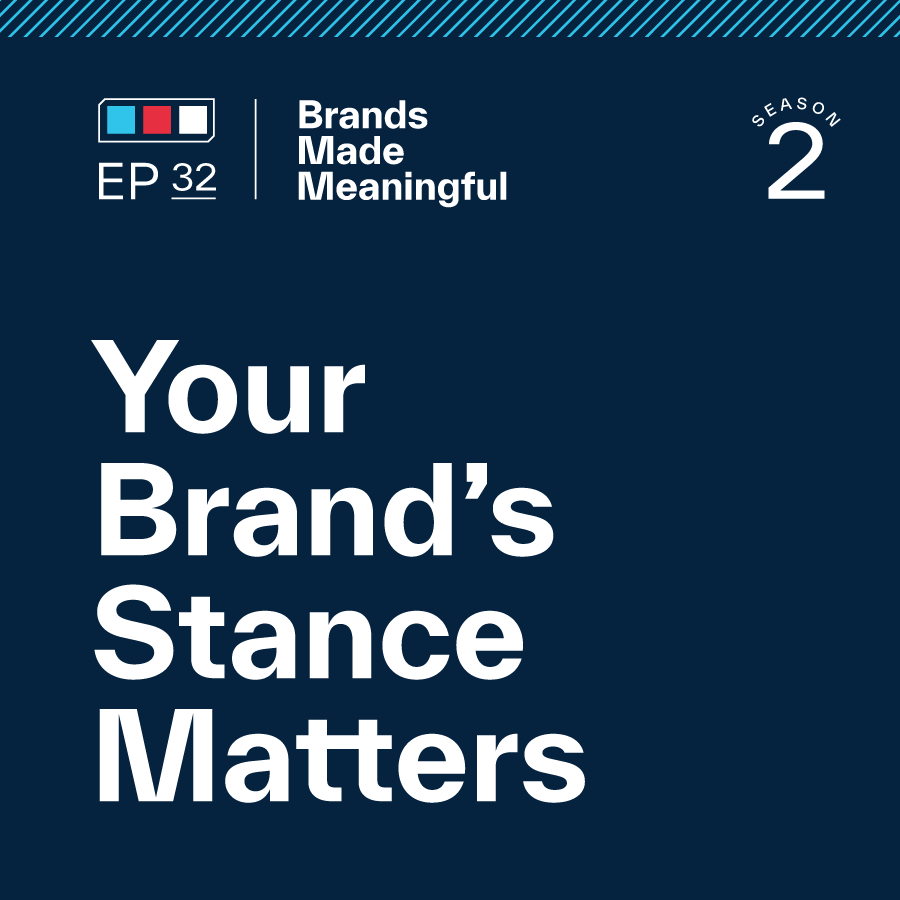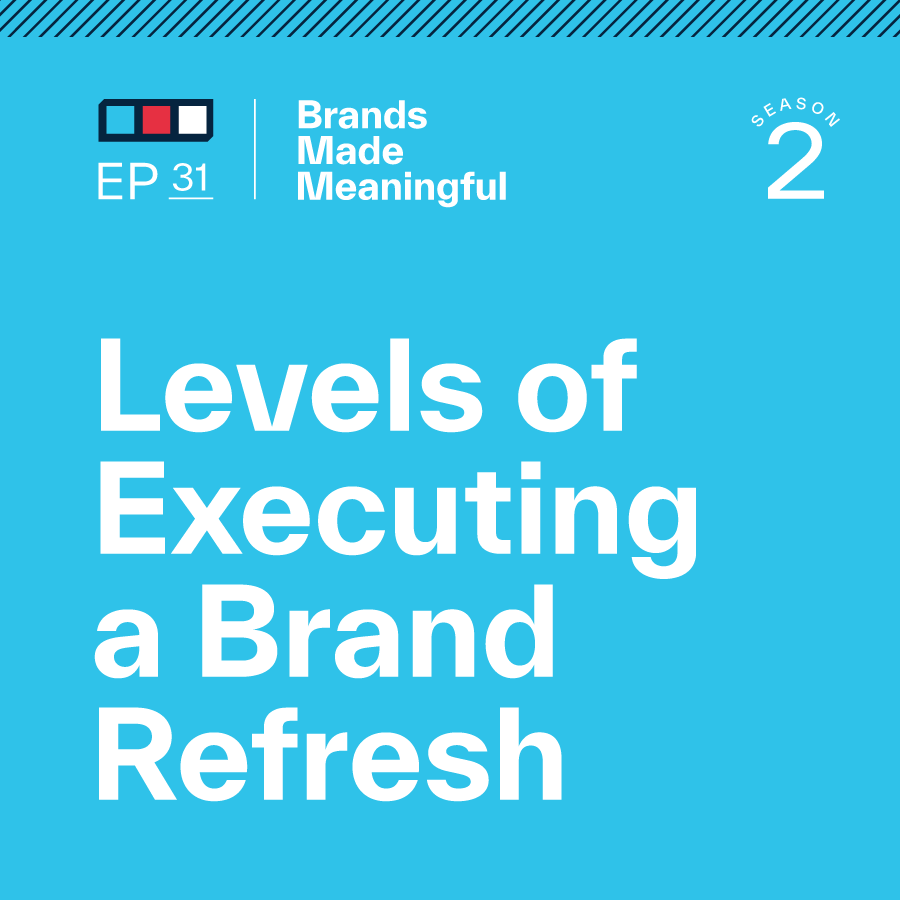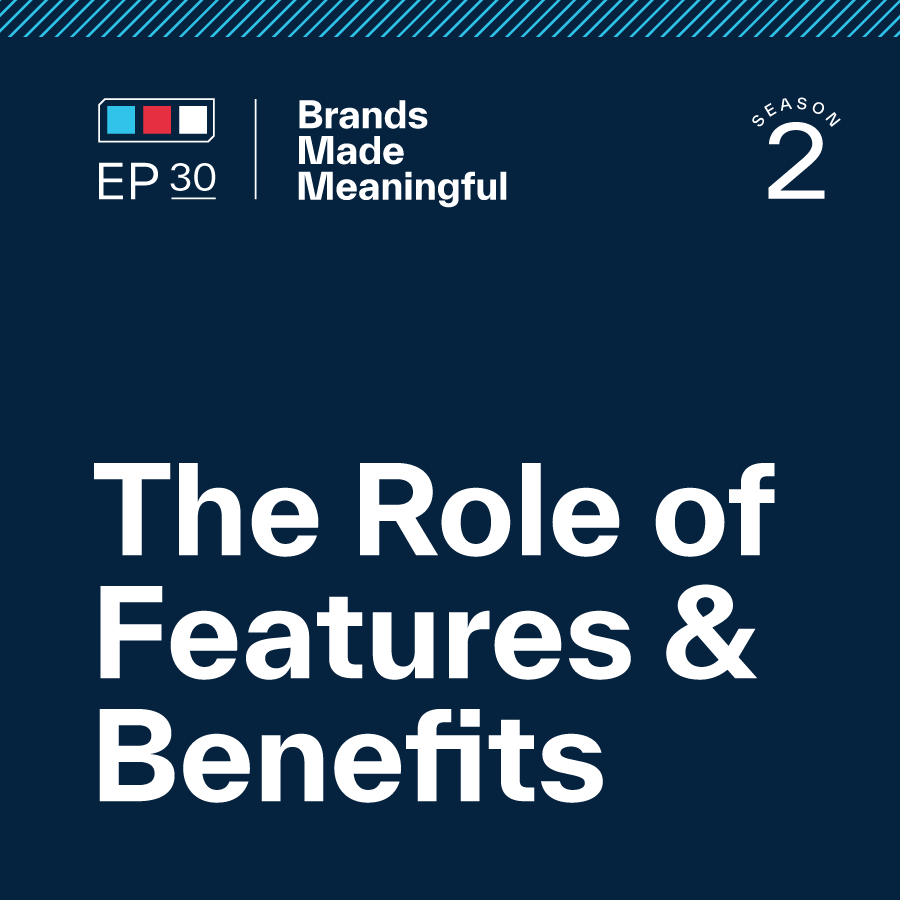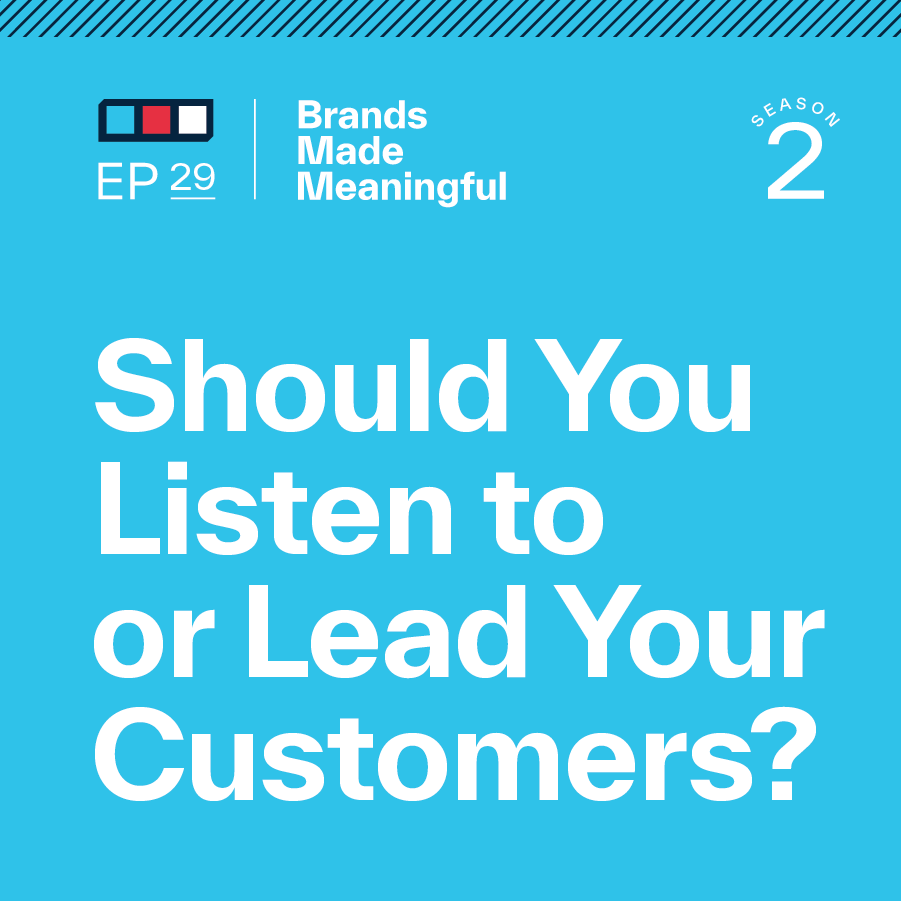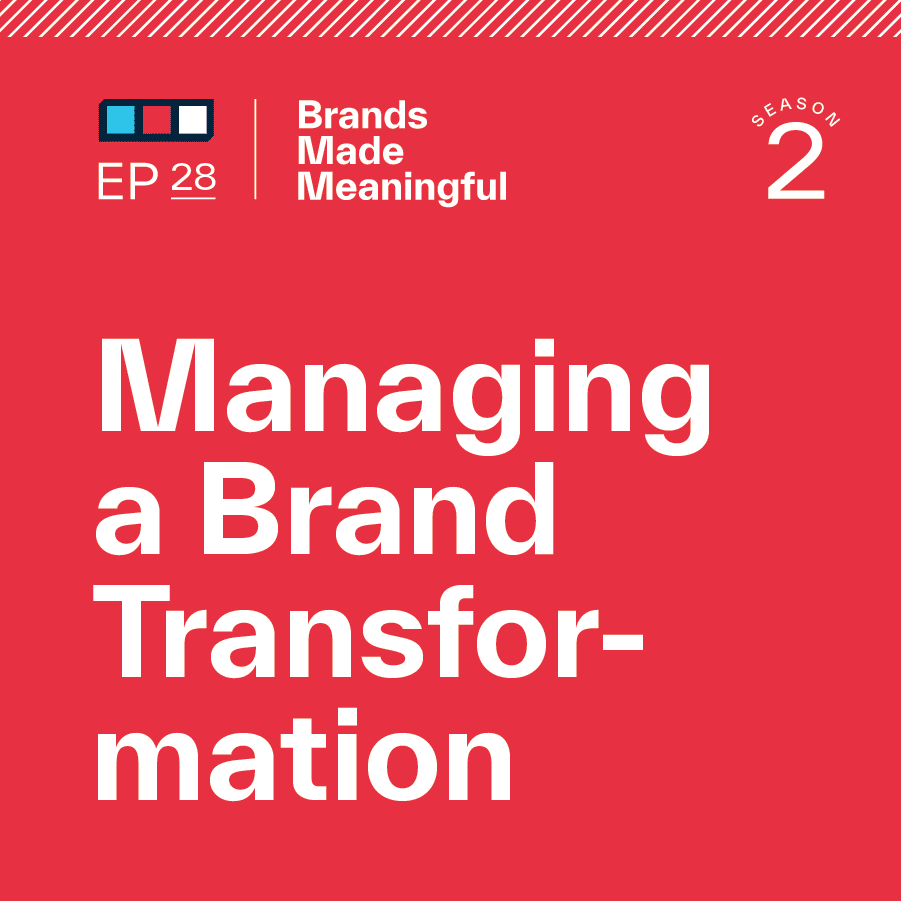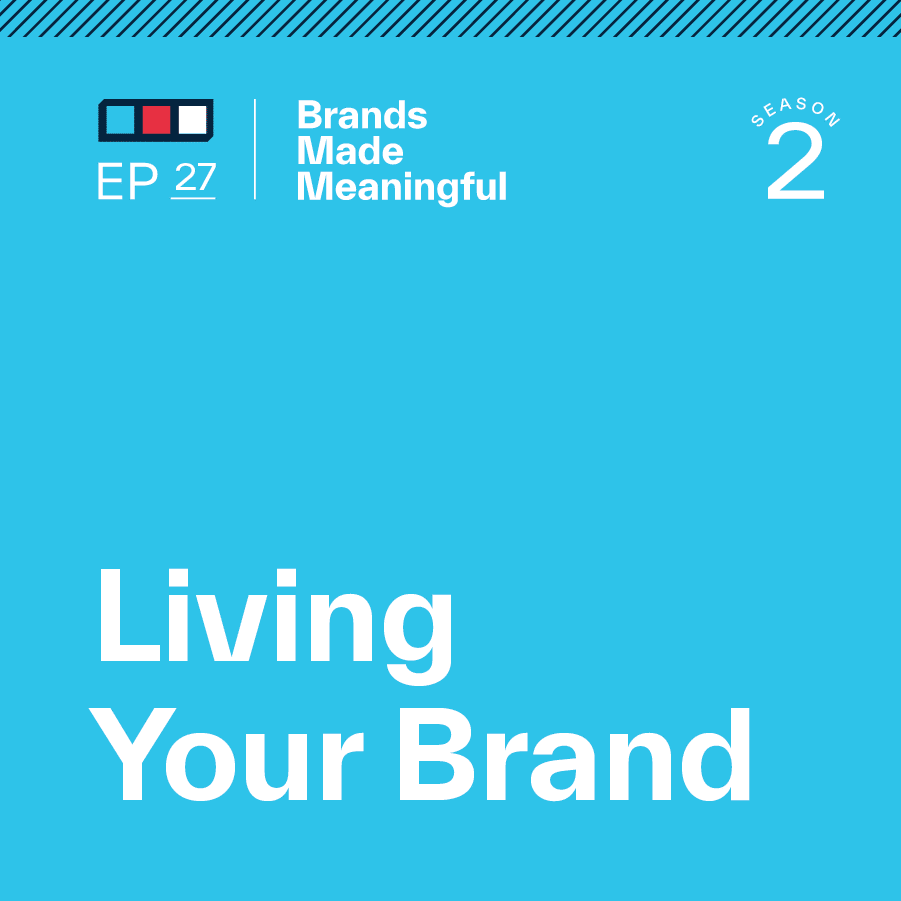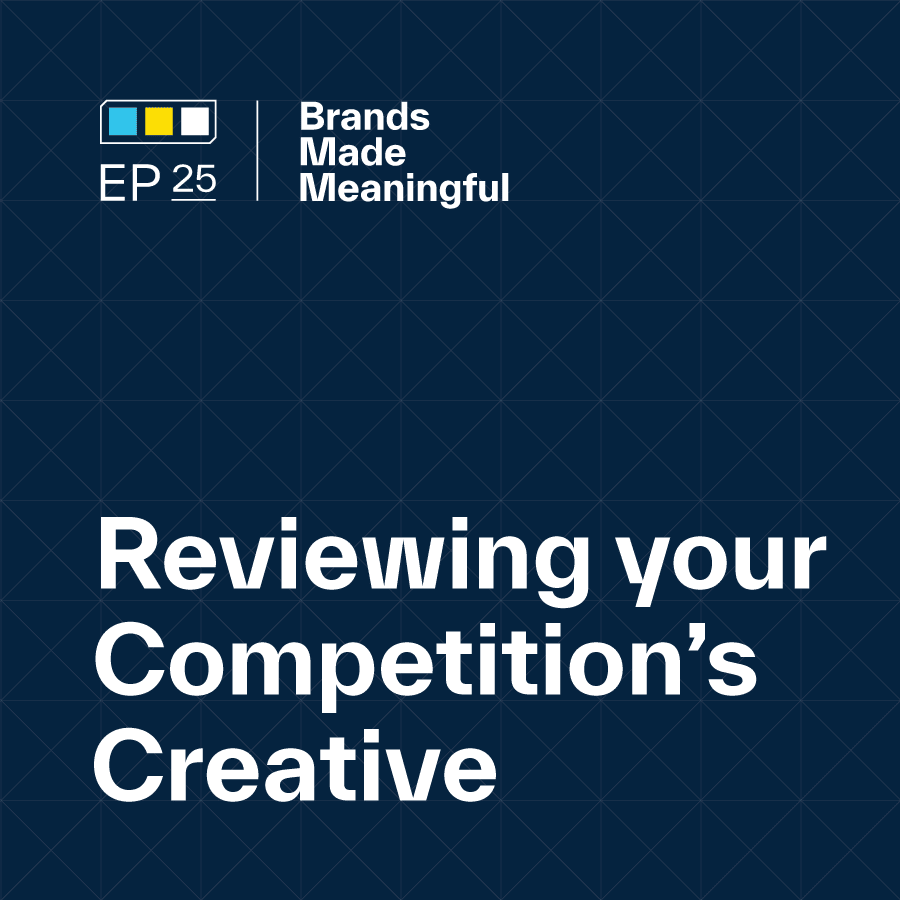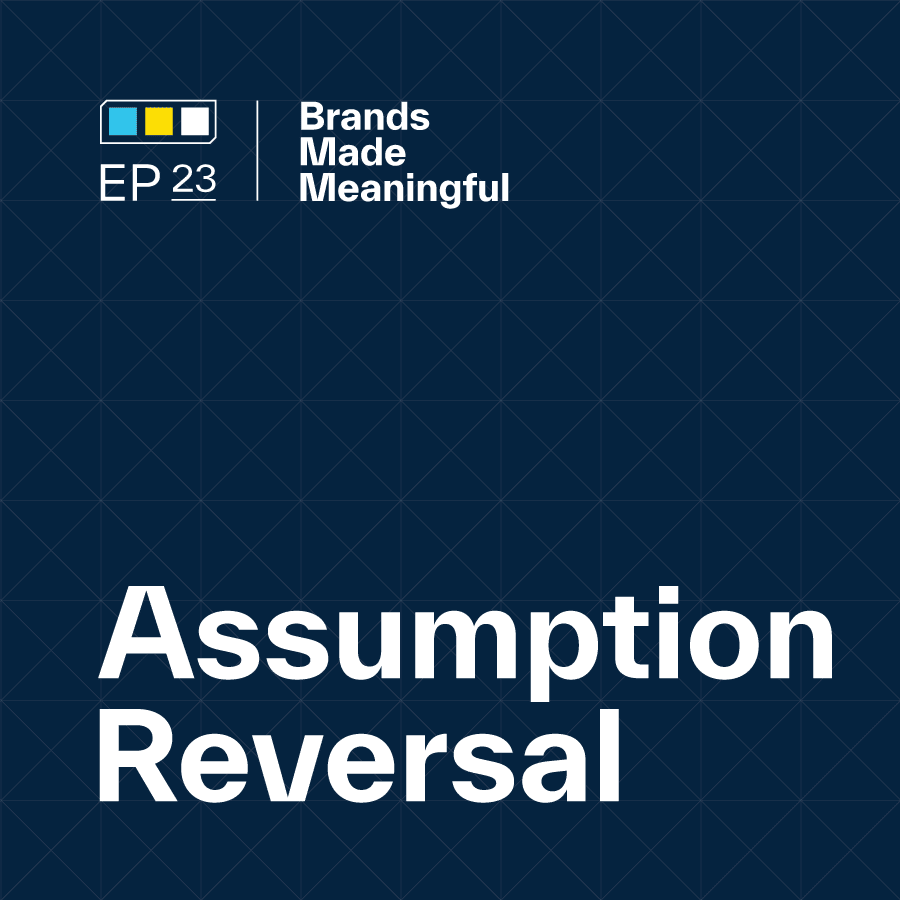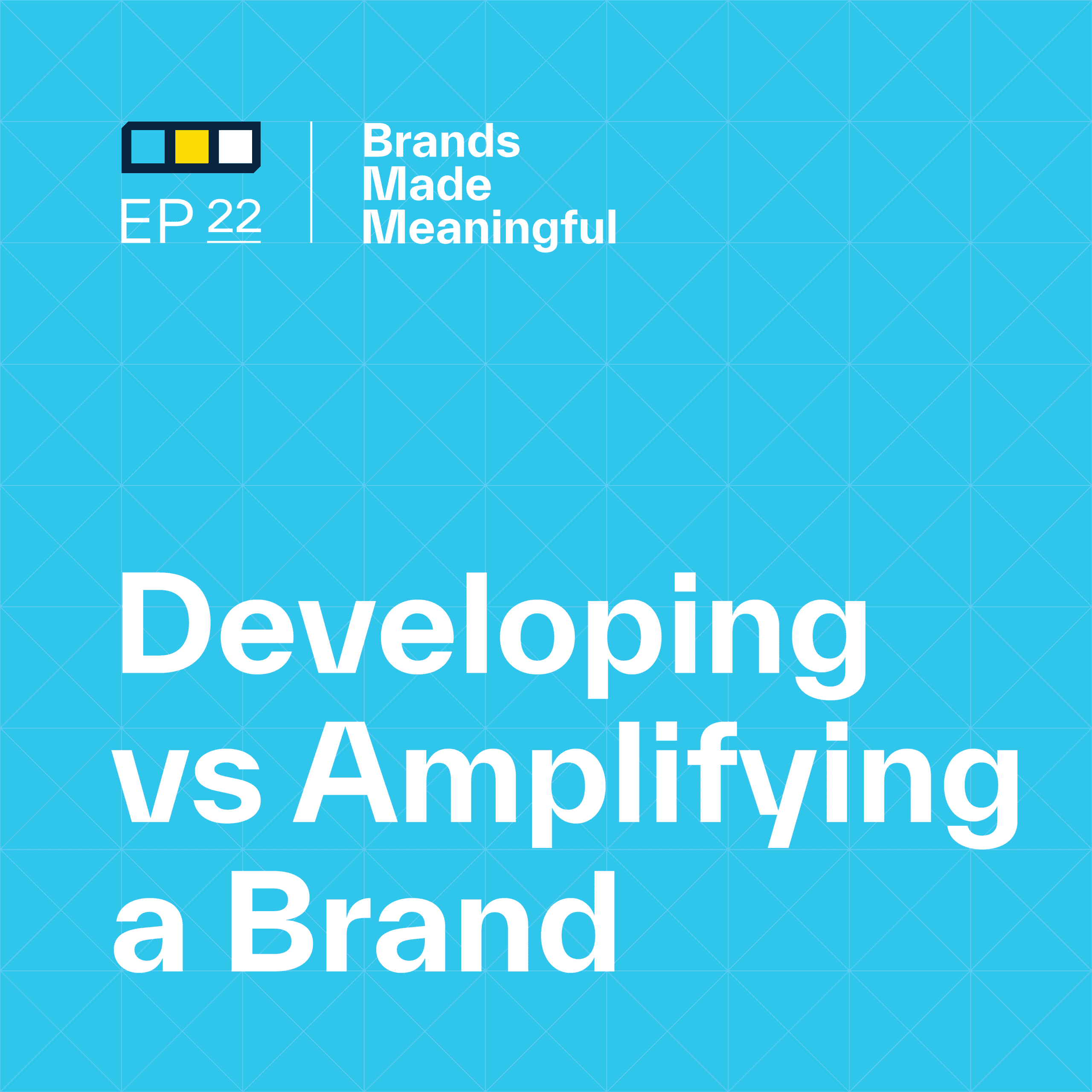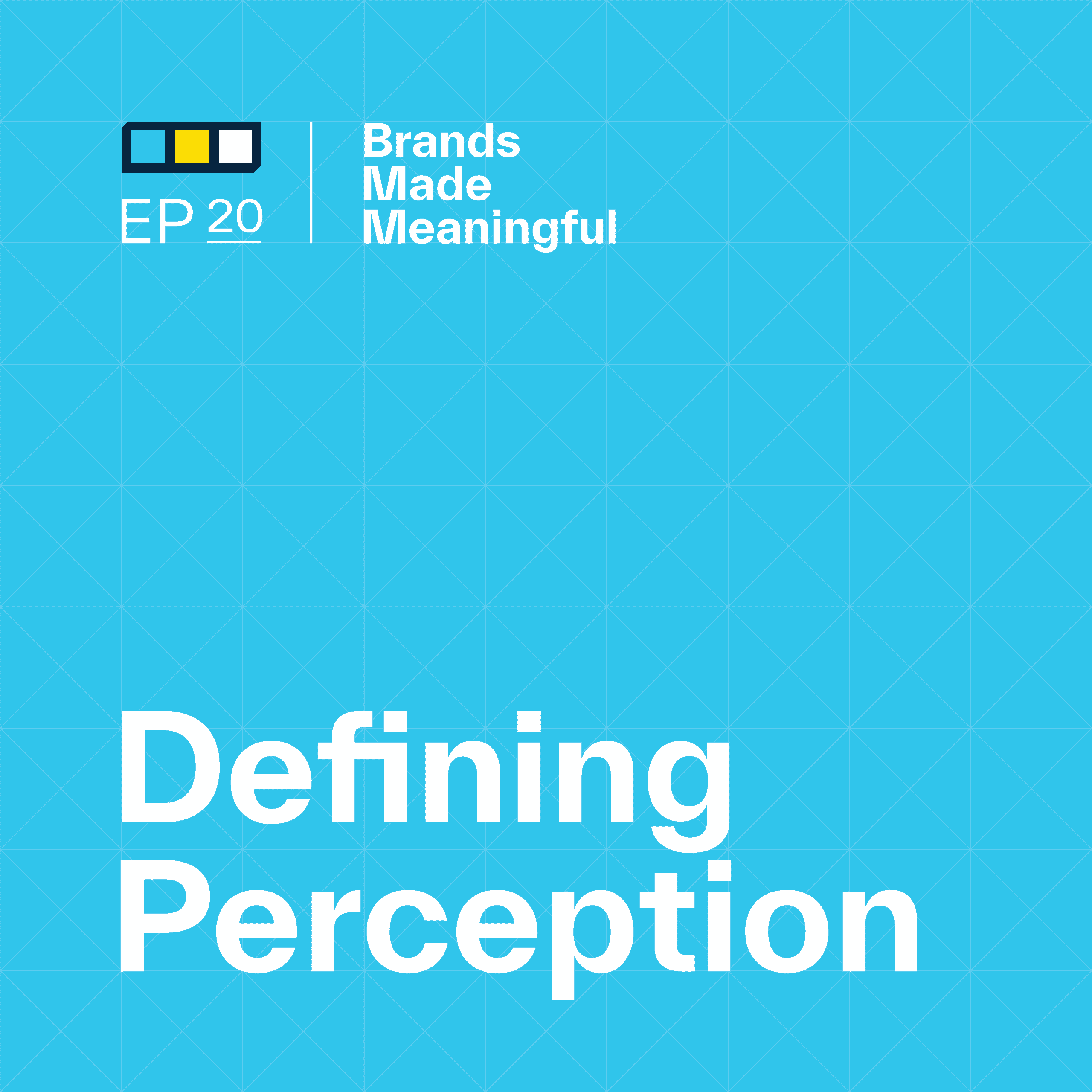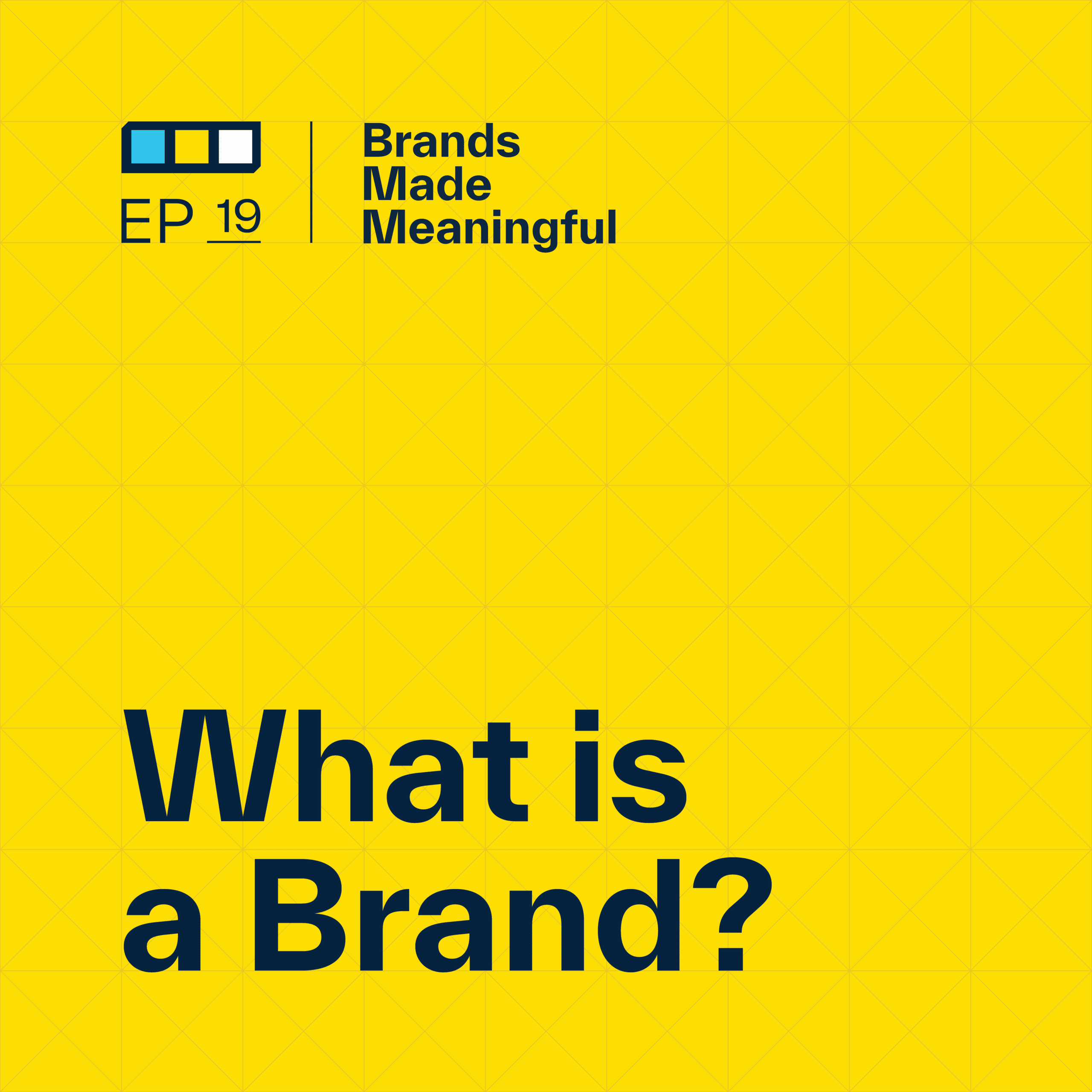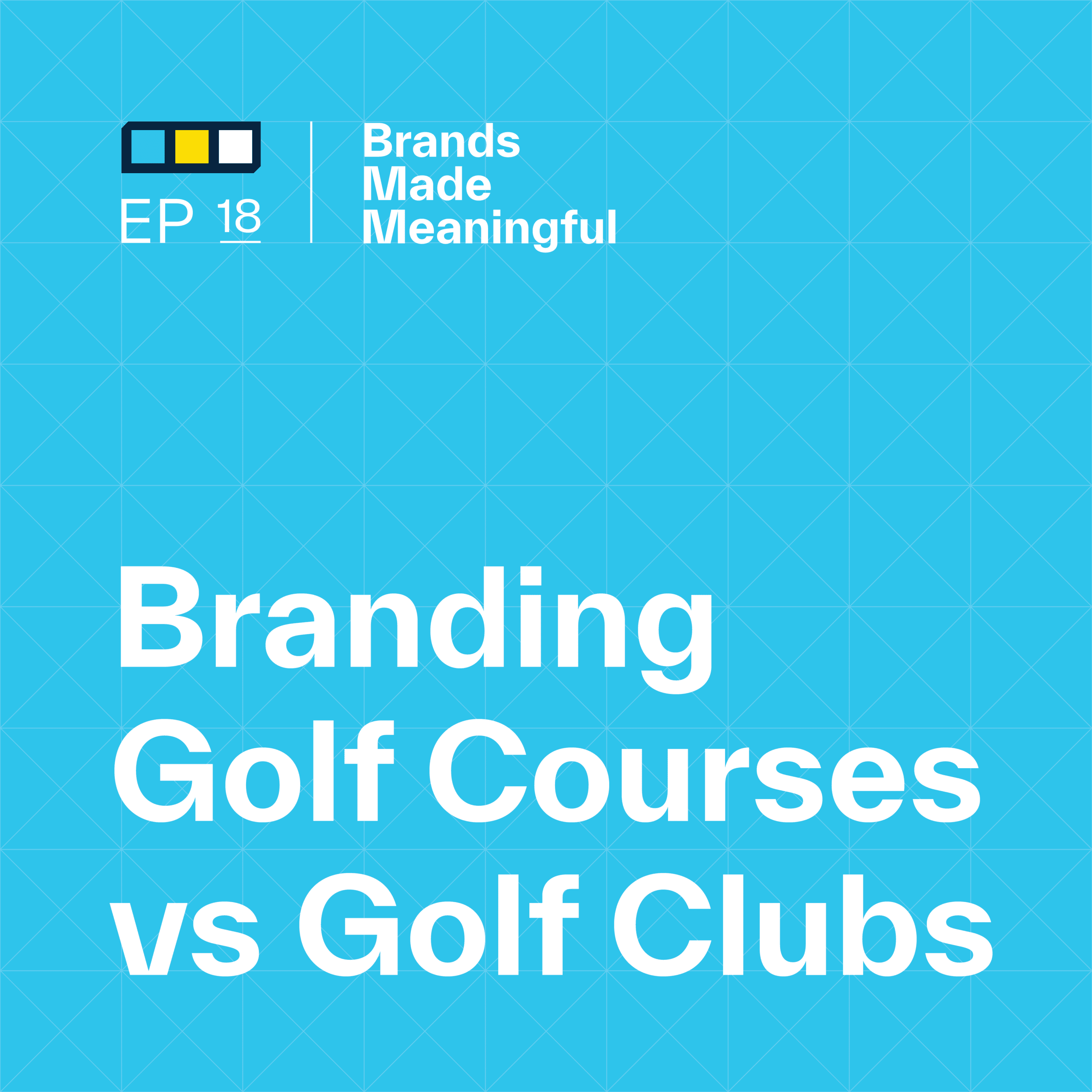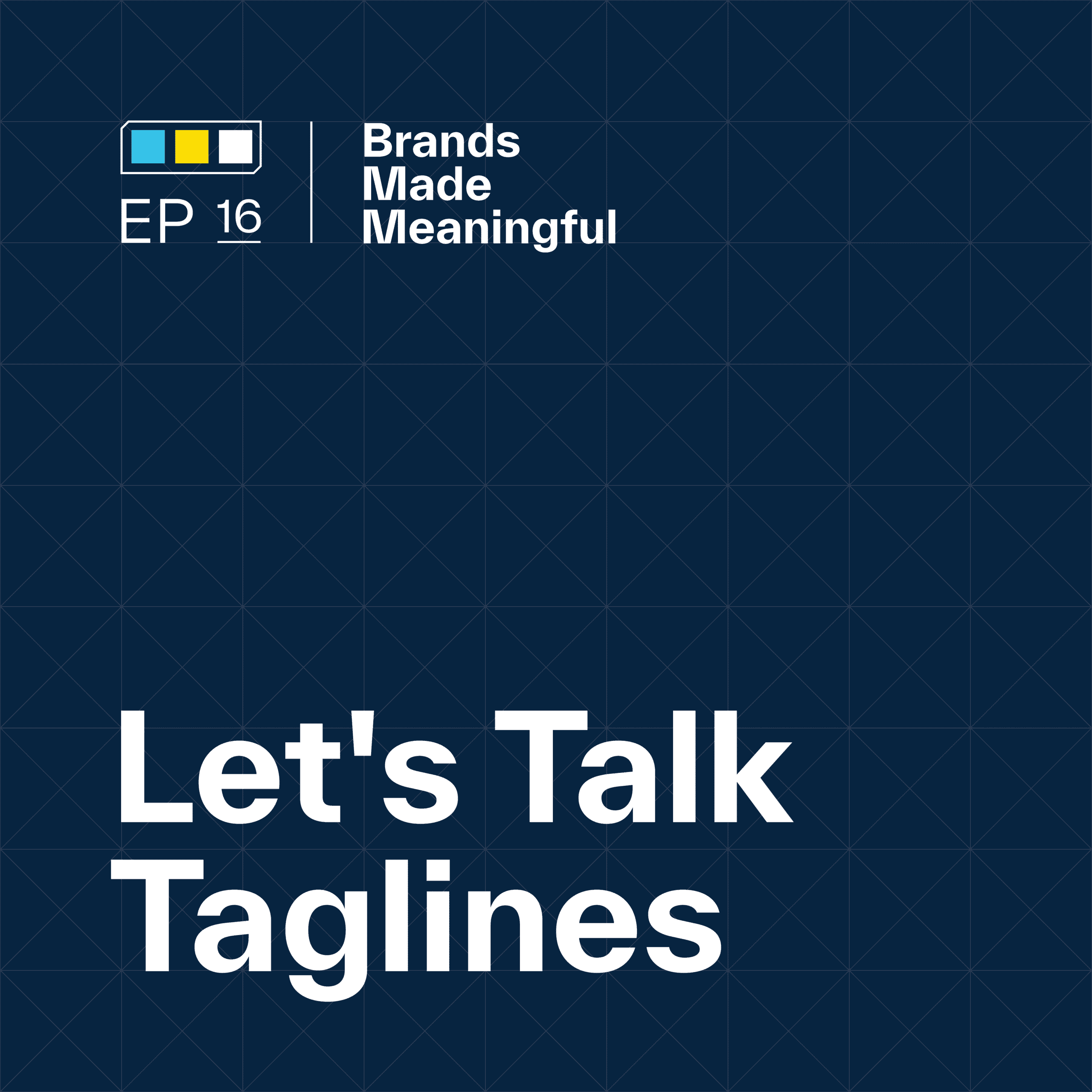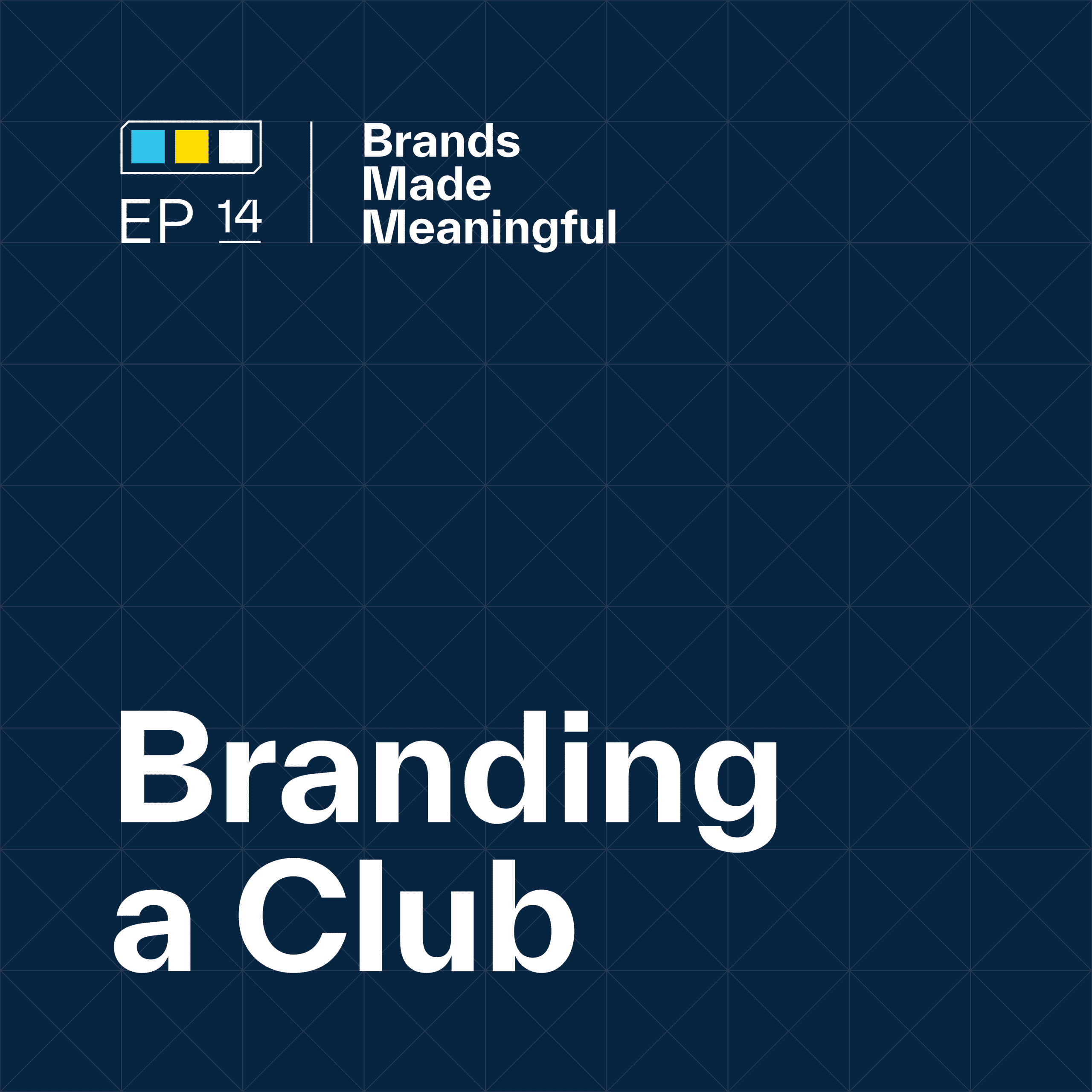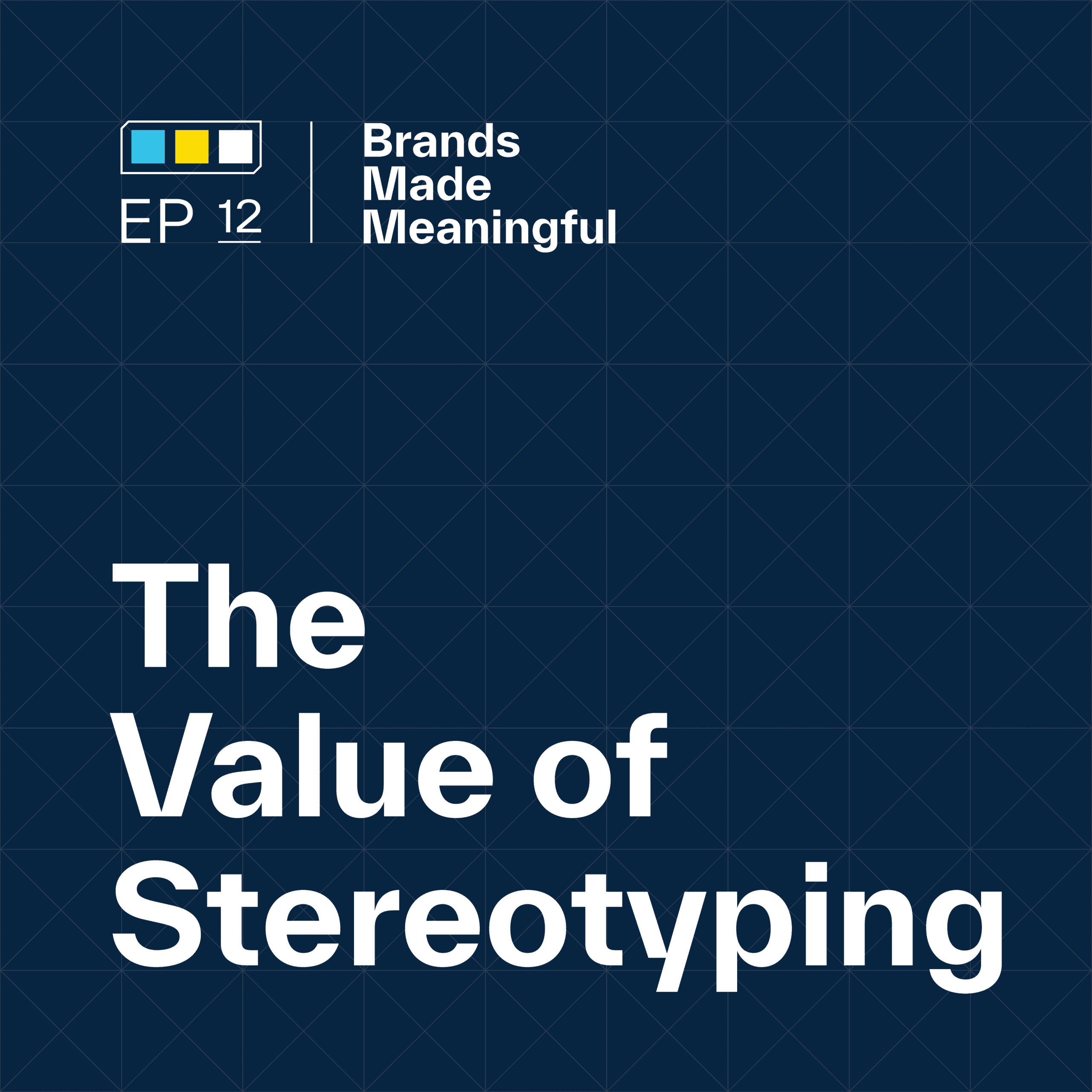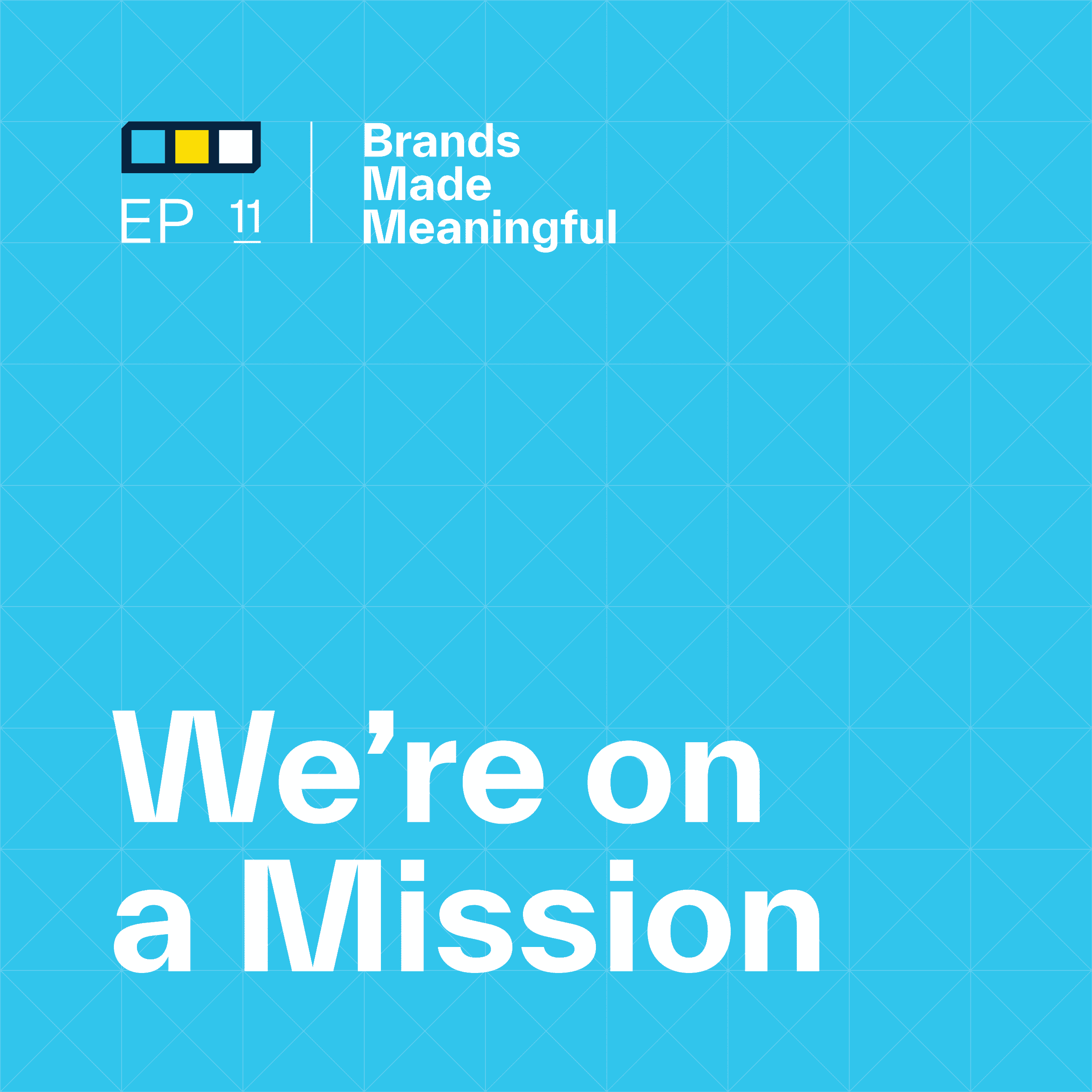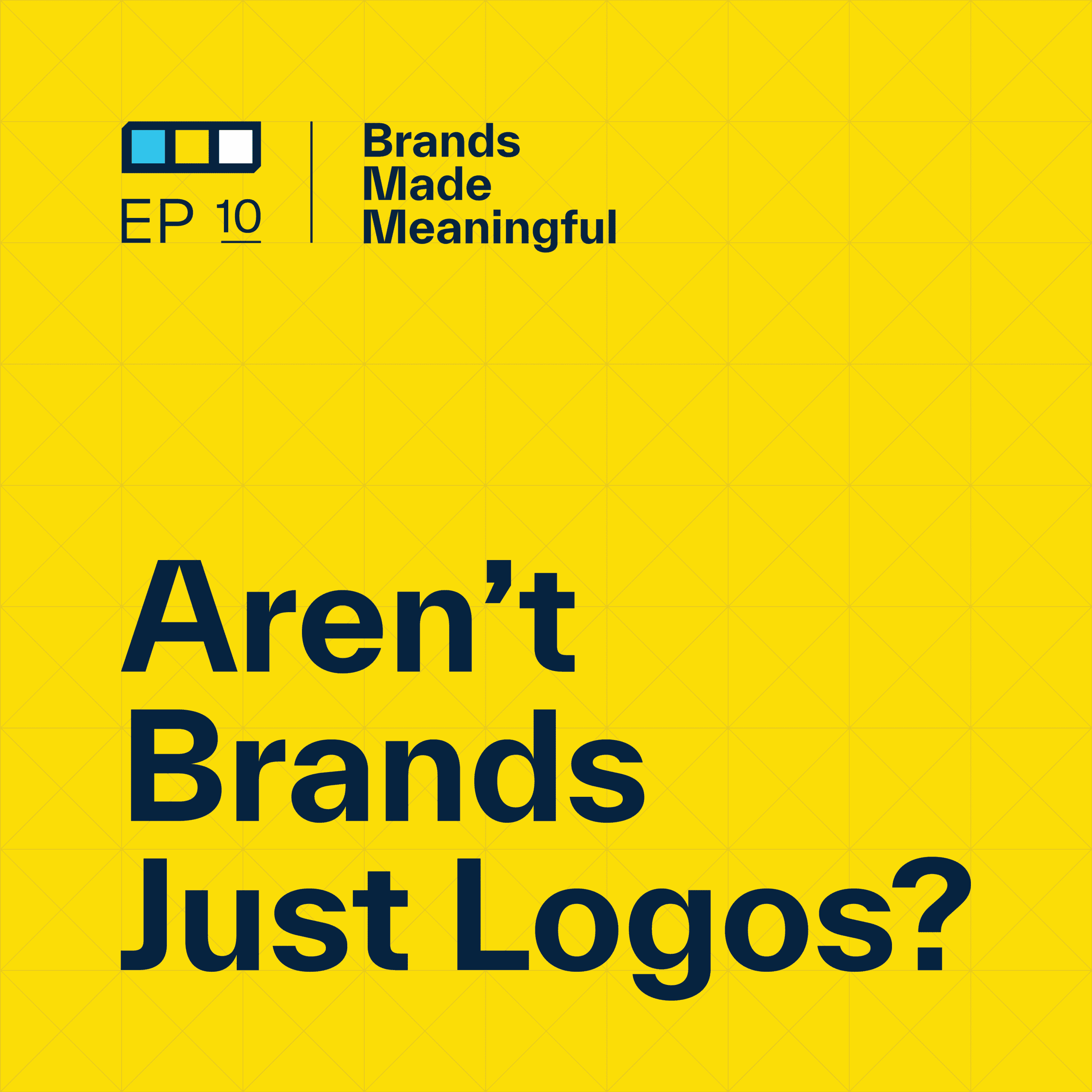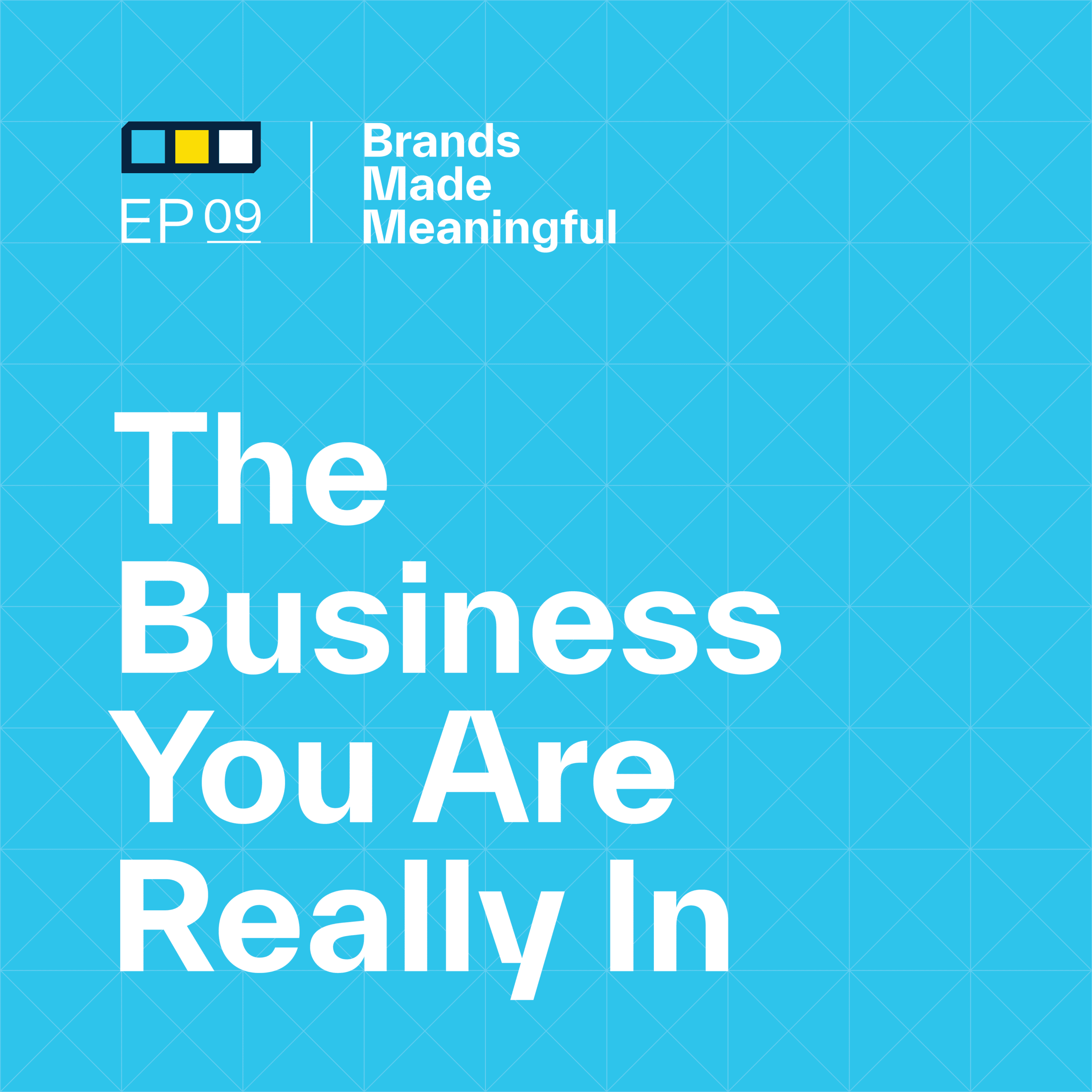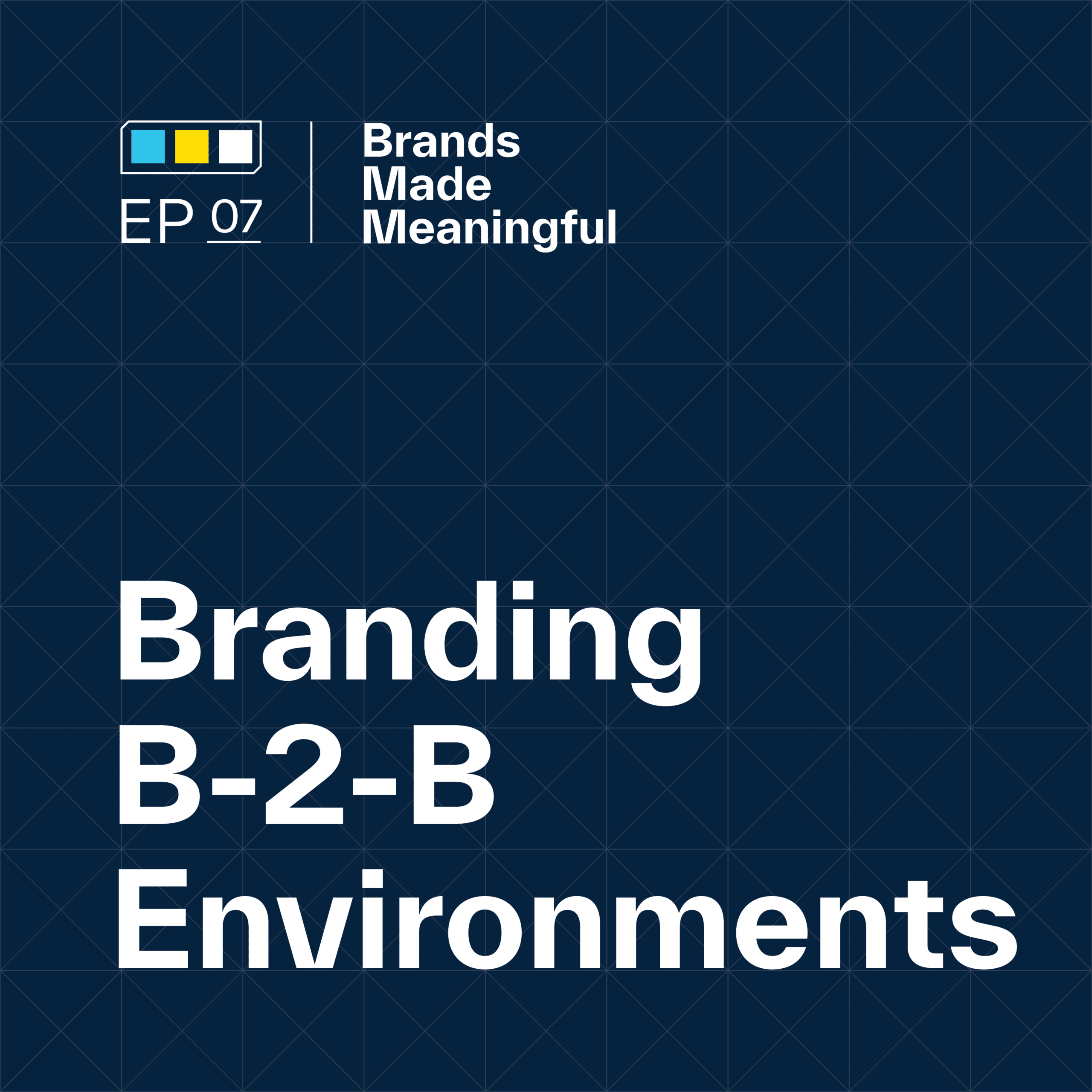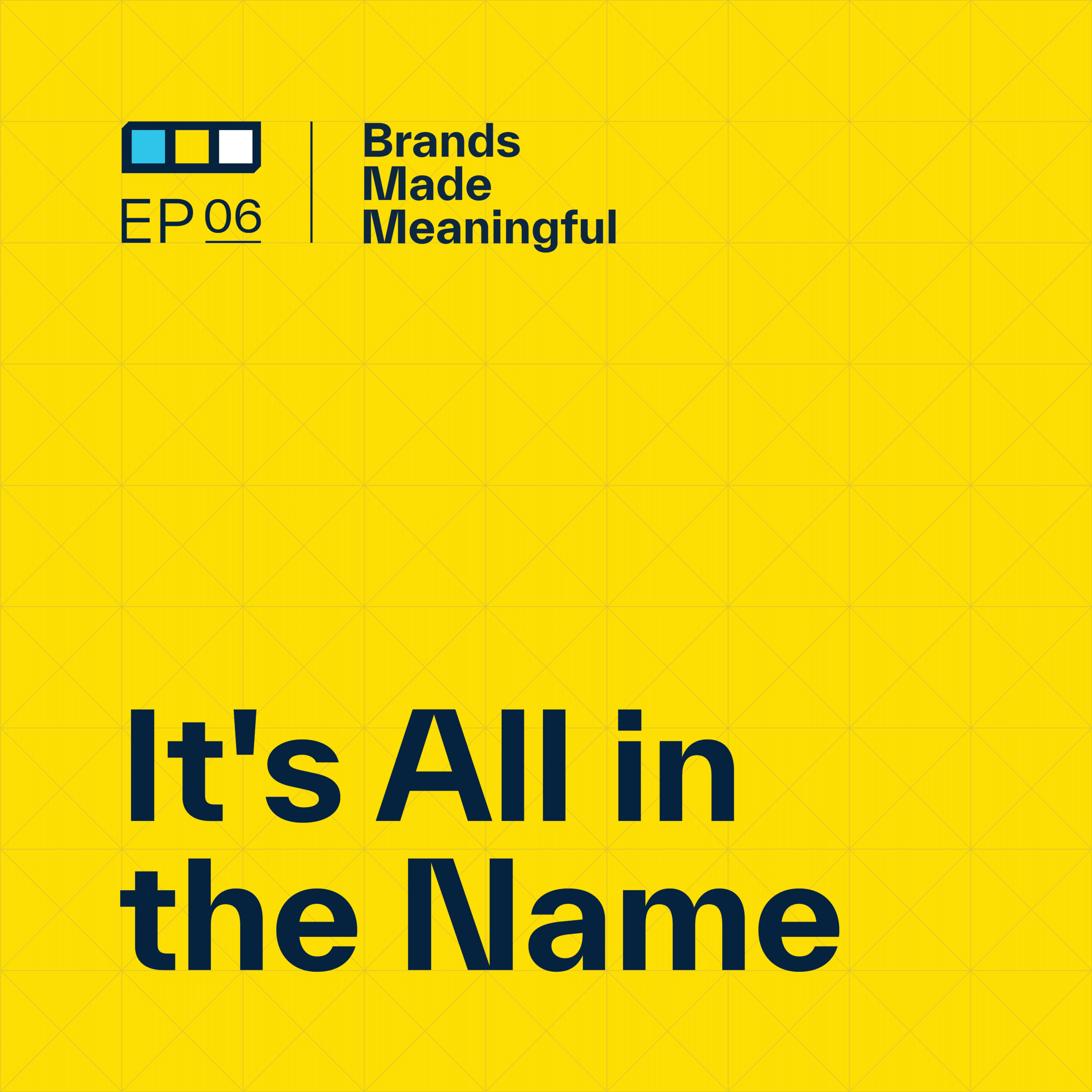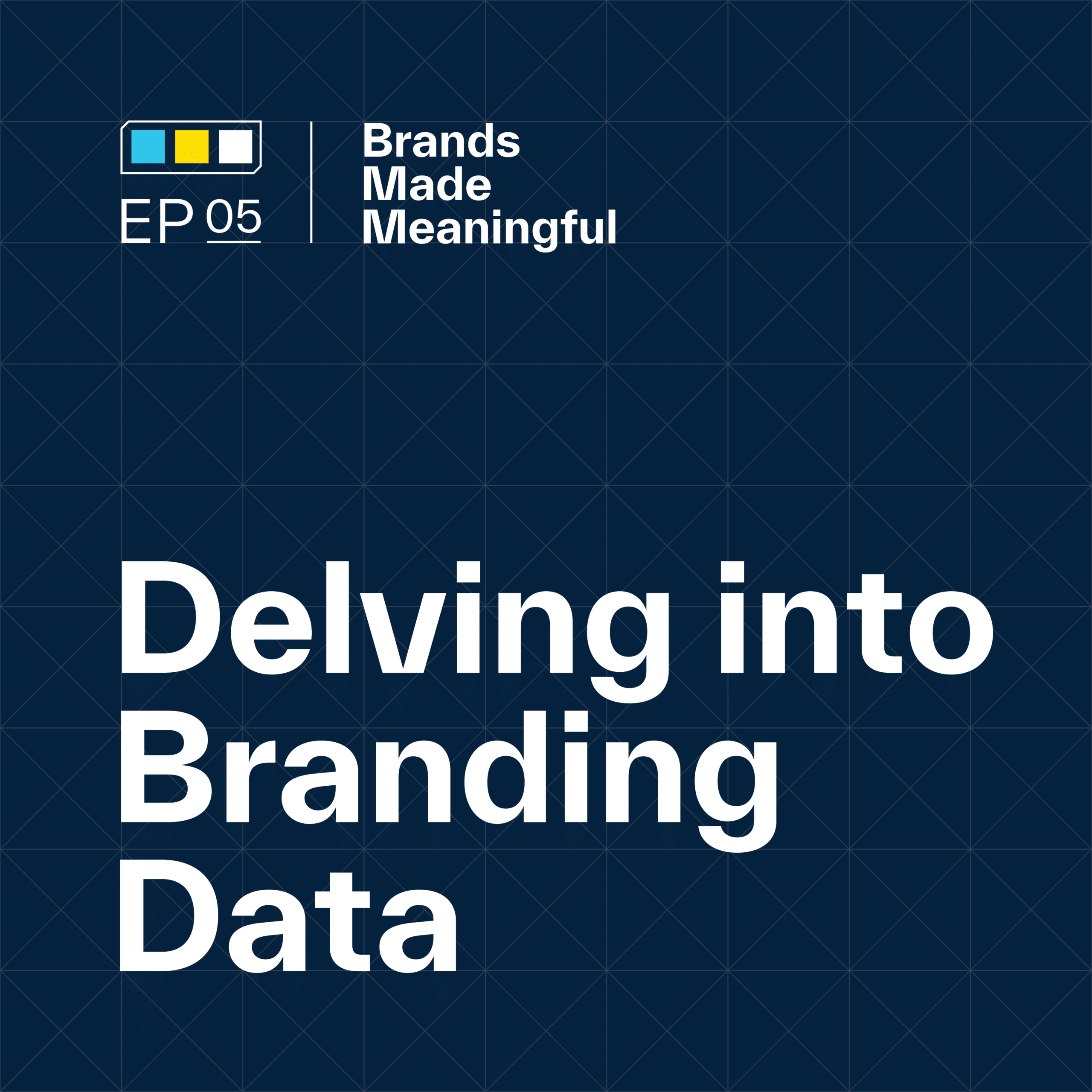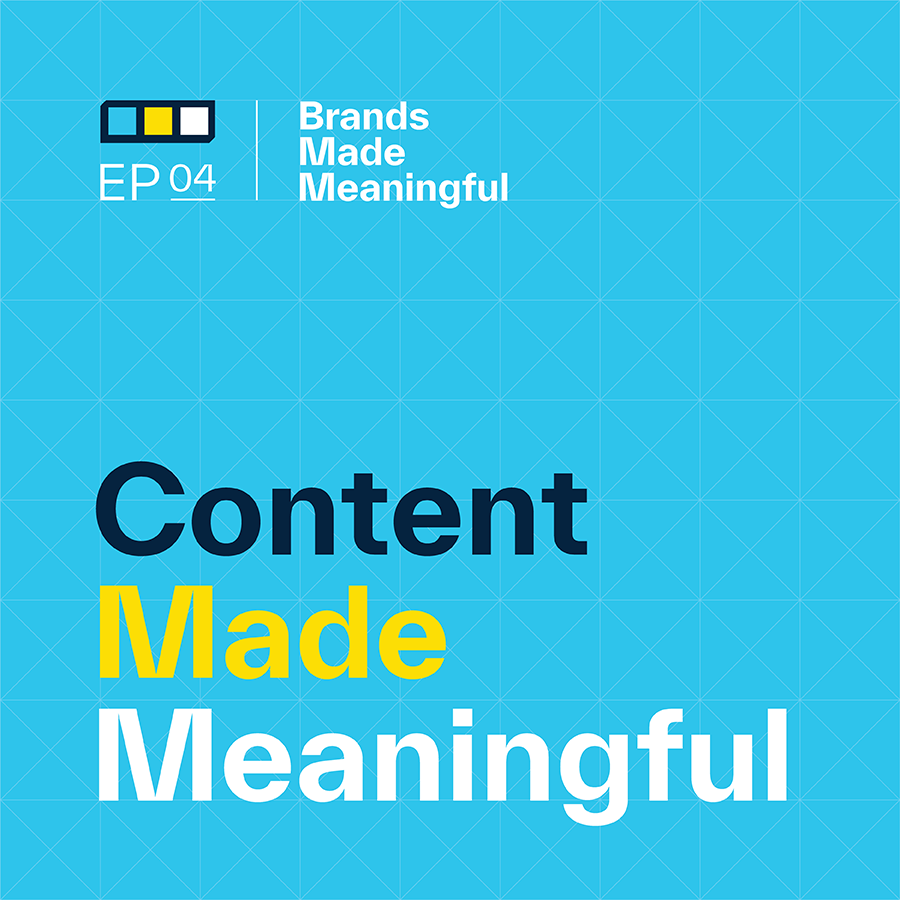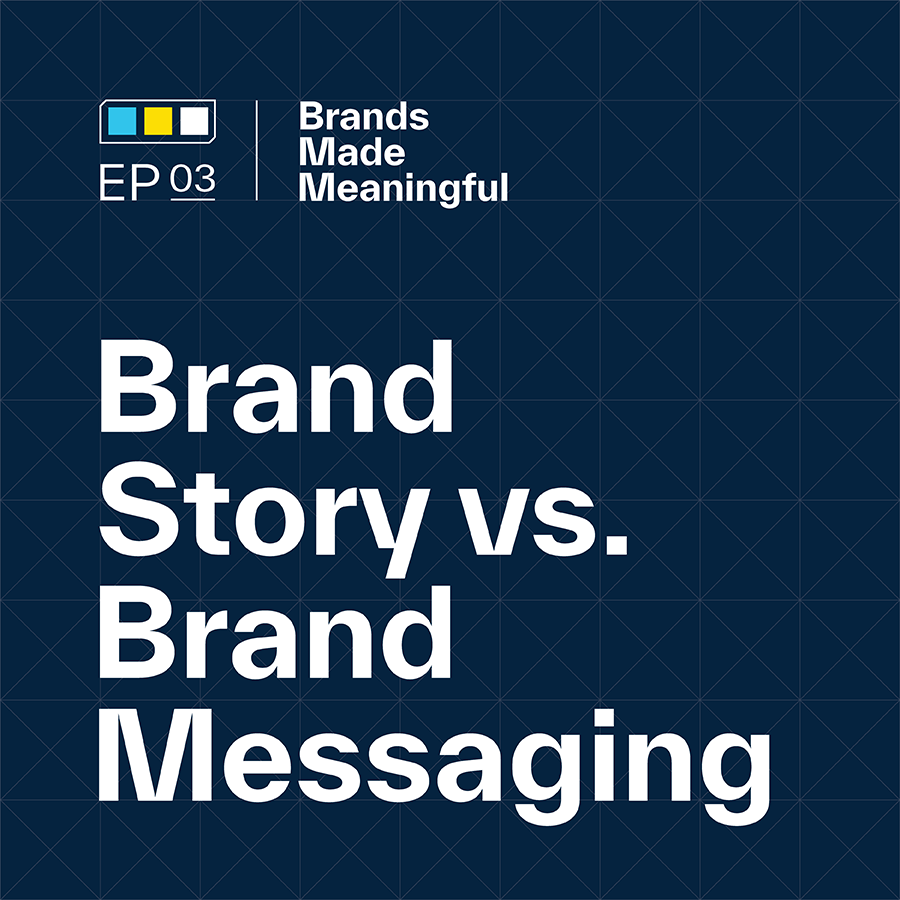EPISODE 01
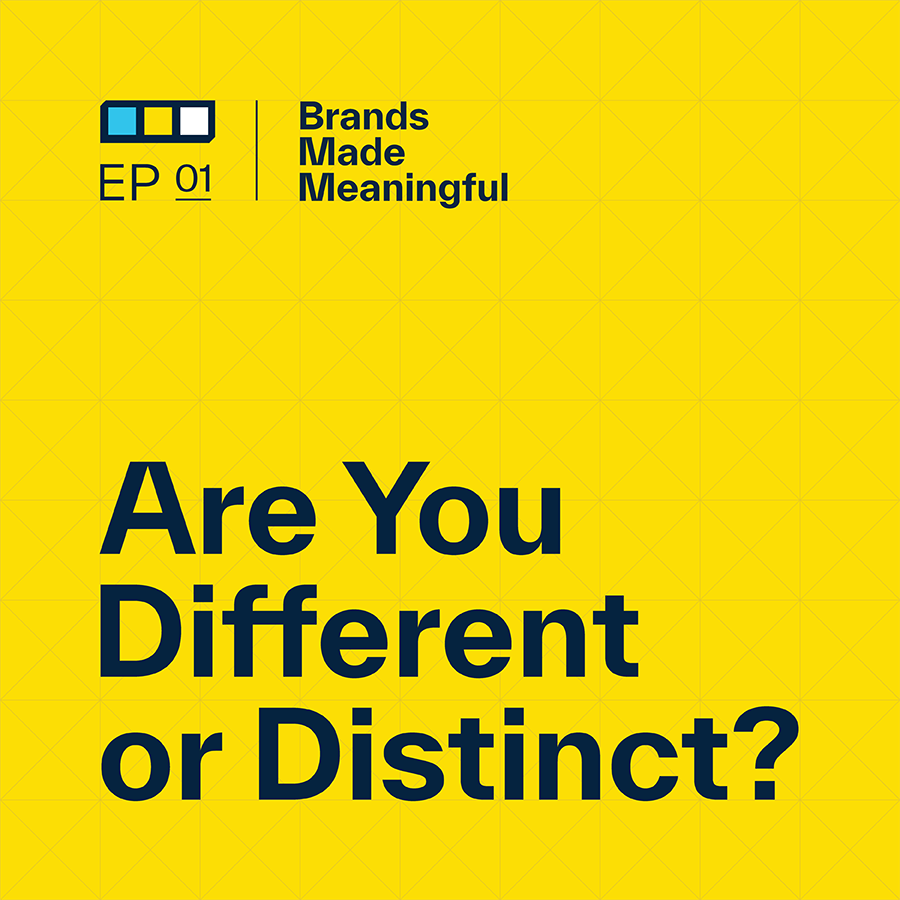
Are you Different or Distinct?
Episode 01
It’s not about being the only option, it’s about being the right option. Join Derek and Tucker as they discuss Differentiation & Distinction.
EPISODE TRANSCRIPTION
Today we’re going to talk about differentiation, distinction, and that whole mess in branding and marketing.
Derek
Yeah, two different things. A lot of people think that differentiation is distinction, that being distinctive in the eyes of our audience, that how we do that is by differentiating. And when we talk about helping our customers communicate and differentiate, that’s interpreted in a variety of different ways. So let’s lay the foundation of this conversation. Tucker, what does differentiation mean?
Tucker
Differentiation is about being the only option or the right option for a specific audience. So this means offering a unique, identifiable collection of deliverables, and those deliverables can be services or products. But when you look at it, what do we deliver to our customers, and is that any different or unique from what our competitors offer to those same customers?
Expand Full Transcript
Derek
Yeah, it’s giving people a reason to choose your business over somebody else’s who they perceive as being similar.
Tucker
Each one of those points of differentiation really has to be deep, right? They can’t be surface-level things we’re talking about. They can’t just be like “Oh, well, we’re really good at what we do.” That’s not a differentiator, it doesn’t really bring value in a specific way.
Derek
It’s not how many flavors your product comes in or how many features it has. Specific product benefits are sometimes confused with real differentiators.
Tucker
Yeah, and we’ll get into when you can start identifying when you lack differentiation. But, what happens if someone can’t differentiate? If we’re saying that you have to have a unique, identifiable collection of deliverables, what if someone can’t change their deliverables in a unique and identifiable way? What can they do?
Derek
Then they would have the opportunity to look at being distinct in the eyes of their customers. So I think and we’ll get into this too. But if differentiation is a little bit more foundational, then distinction is more in line with intentionally creating the perception of how people see and react to our brand.
Tucker
The way I define distinction is increasing the recognition or the visibility of a brand in its competitive environment. So that’s when you put everything on the table and you say, OK, this one looks or this one sounds different and distinct, you can pick it out of a crowd. So when someone says stand out of the stand out from the crowd –
Derek
– we say that all the time –
Tucker
Yeah, it means to be distinct. And this is something that creative can really drive. And that’s part of the overarching goal of creative. To make things distinct. To differentiate something is more of a business goal, wouldn’t you say?
Derek
Yeah. One of the reasons why business goals come to mind is because if you’re not differentiated and if you’re not distinct, then you’re probably going to end up in price battles. You’re going to be bidding or people are going to be choosing you based on price or lowest price. They’re not going to be choosing you based on the true value and impact that you provide your customers.
Tucker
That really gets down to the root of why is differentiation or distinction important. But why is that a problem? If you lack differentiation, if you lack distinction, what are you really losing? I would say that that’s pricing power. When you hear that people are racing to the bottom, trying to get the lowest price, that’s what happens when you’re not distinct. Where a customer can’t pick you out from your competitors, they look at the only thing they can pick out. And that would be price.
Derek
If you can’t differentiate with price, can you differentiate with customer service? A lot of people that we work with say “that’s how we stand out, that’s our value proposition, that’s how we’re different and better than the other people that we compete with.” They preach customer service, customer service, customer service; but it’s really hard to measure that.
Tucker
I think that this is where we get to customer service itself is too broad, in my mind. When you say we do the best customer service, I would say that that’s not a point of differentiation. That is something that people actually care about because everyone cares about service, of course, but that doesn’t necessarily mean they know what you’re talking about. So if you’re talking about customer service, I would go deeper and say, Well, what specifically do you do that is customer service oriented that moves the needle forward in a different way.
Derek
It’s almost like the exercise of asking “why” two or three times to get to that deeper level for your organization, specifically or for the people that you’re trying to attract. What does customer service mean to them, and why? What specifically to them would resonate?
Tucker
And that goes a long ways, right? Because you can offer great customer service, your customer or your competitor can offer great customer service, but you do different types of customer service. You offer different pieces of deliverables that you give, which goes a long way to understanding how people are. So it’s really interesting to say you can go on other things when it comes to being differentiated. It doesn’t necessarily have to be a product where you say, “Oh, well we give them this pencil versus a pen”, it can be a different type of service.
Derek
So if being differentiated, if being distinct, helps your company in all kinds of ways, if that is true, and if the problem is that a lot of businesses and organizations are trying to solve and achieve that level of distinction, my guess is that they recognize that isn’t the actual problem. They’re not necessarily trying to solve for becoming more distinct, they’re probably solving for shorter-term symptoms.
Tucker
And those symptoms come up all the time. So we’ve actually pulled three of the most common ones that we hear from clients that are industry agnostic. Right, where we say, Oh, that’s a red flag, this red flag determines that they might have a differentiation problem or a distinction problem. That they’re not unique in the eyes of their customers.
Derek
I’m looking at the list here, too, and it’s interesting because the first one is external. One of the most common things that we hear people complaining about is that their messaging isn’t working or that their messaging is hyper targeted on the features and the benefits of their product, instead of telling the brand story.
Tucker
Yeah. And I think the most common thing is when you hear people say “Our messaging is just awful”. A lot of times it’s like, “I can’t even look at our website because when I read it, it’s not even close to what, what we say, it just seems slimey, or maybe there’s a couple of things in there that you’re just embarrassed to read it out loud.
Derek
It sounds like everybody else. It’s filled with a lot of industry terms and acronyms and abbreviations that I don’t even know what half of these things mean anymore.
Tucker
It can be very unapproachable. I mean, there’s there’s so many different things.
Derek
And nobody on our team is on the same board and says the same message in the same way, everybody’s making it up in the way that they see.
Tucker
Yep, and that’s not cohesive. So one big thing that I pulled out is how we know that we have differentiation problem or distinction problem is the messaging focuses on the features, right? And the best example that I can pull from this is toothpaste. When you look at toothpaste, every single product says they have a magnificent feature or benefit or flavor or quality. But at the end of the day, it’s still toothpaste. It’s still the same deliverable, and that’s where we start to get the understanding between, OK, so toothpaste is a commodity. And how do they stand out? How does Colgate or Crest or all these other brands sell more than generic brands like Target or Walmart? How do they do that? That’s with distinction! So it’s pulling these things, it’s building a little bit more of a story in there, but being distinct in the way that they approach the selling of it. So that’s a good example. What’s the second example that we do for a red flag?
Derek
Another red flag is when customers complain at the lack of traction in their marketing efforts. Are websites not being found enough or are we not closing on enough opportunities? Are our sales are maybe lagging a little bit? We’re pumping all this money into pay per click advertising, and we’re just not seeing the results that we’ve been promised.
Tucker
Yeah. Well, and that comes with the whole side of you can track those things and there’s an industry standard, right? Normally when you put out pay per click ads and you come through and you go, well, the standard should be that we get a conversion rate of X, Y or Z; so if we don’t get that conversion rate, what’s going on? And if we see that trend across multiple different campaigns between pay per click, between different sales approaches, between all this other stuff, it might result in that you’re just not viewed as distinct or differentiated based on other people. Or you’re not speaking to the right audience.
Derek
So it’s a messaging problem, a differentiation problem, and it’s a distinction problem. But how often do customers self-evaluate to the point where they realize that they have a uniqueness perception issue, not a “Well, we’re just marketing in the wrong channel or we need to spend more money,” issue.
Tucker
This is where it becomes the big difference between just keep putting out, just keep putting out things. It’s all about volume. It’s not necessarily about volume. If you’ve been putting out the volume with finding no results. So I think the biggest question here, if you do come across this in your organization where you have frequent and effective marketing campaigns, I would stand back and say, OK, so what are our competitors saying and what do they look like and what is their offer compared to ours? Is it just the same, or are we just static noise out there? But it’s an interesting exercise to do.
Derek
For the third one, we shift to the internal audience. It’s actually surprising to me how often we hear from our customers who we help from a branding standpoint complain about the challenges that they have in attracting new employees. I had one conversation recently where the customer was complaining that a couple of his employees had left for equal opportunities; same pay, same role, same structure. But they went to another company and they felt like their pay was competitive. Their environment, they felt, was a good one. And he didn’t. He couldn’t understand what was the cause of that type of movement between staffers.
Tucker
Yeah, and the differentiation there or the distinction as a big impact, right? We’re saying, well, what differentiates you as an organization internally? This is where we get the interesting conversation about branding and marketing and how that plays out internally is just as impactful as externally. So when we’re talking to customers or current clients or ongoing clients that are like, Hey, we’re just finding this to be a big problem, it almost always comes back to, OK, so how are you different than anyone else? And if you aren’t any different, how can we visually or verbally make you feel or sound different? What story can we help you tell that’s a little bit different than those competitors?
Derek
Well, there are two sides to what you just said. If I was looking for a career change and I had two opportunities in front of me and from a salary compensation package, role title, et cetera, the things that were written up in that offer were apples to apples, then what would be the thing that would tip the scales and incentivize me to choose one over the other? And if one of those is part of that distinction portion that you just described that I think would have attracted me to that place in the first place, that messaging, that voice, what they look like, what the brand represents. I think the other side that would actually help me make my choice would be a more foundational, cultural, value-driven side, a much deeper side of what that business stands for. And that’s the true differentiation.
Tucker
There are people out there, and I think this is a really, really interesting example, the people who say: “well money is king; salary is king.” I’d push back and say, well look at nonprofits. You can get paid good money to work at a nonprofit, but a lot of them don’t have the budget to pay people really well. But they stand for something and they have a mission to go do good and they can attract some pretty great talent.
Derek
They attract people that share that same vision and are passionate about helping play a key role in that organization’s quest for doing that thing that they’re working towards.
Tucker
So, the top three things that we’re saying are red flags. We have one, messaging focuses on features; talked about toothpaste a little bit there. Two, frequent, ineffective marketing campaigns, so you just keep putting money into an engine that’s not getting you anywhere. And then three is difficult; attracting new employees. So we’re talking about people leaving, maybe people just aren’t accepting the role and going somewhere else, and this is all compared to your competitors and your landscape.
Derek
Yeah, it’s your brand is just as important to your internal culture, to your internal team, as it is to your current customers and your prospective customers.
Tucker
All right. So then if those are the problems, if those are the red flags, those are the big things that we’re seeing that kind of tip the scales and say, “Oh, we got a problem here”. What are the three things that we could start with that might help solve those problems to get to the end of lack of differentiation or distinction?
Derek
Well, the first one’s definitely foundational. It’s part of what we here refer to as your brand foundation. And within that core foundational piece, what would truly help somebody while both differentiate and also make sure that they are distinct in the eyes of, well, everybody? This would be what we call a positioning strategy.
Tucker
Yep, and that positioning strategy at the high level of what positioning is, it’s basically making sure that you’re situated in the minds of your consumers or the internal people. So we’re saying prospective employees, but let’s say in this case, consumers; where are you situated in their mind? So the best example I can do is when we have to access grid and say, all right, prices on one side, services on the other, which is the most basic way to do it and say we’re a high service, high price people. That means you’re positioned in that upper quadrant, right? So for us, it’s taking those axes and putting our own labels on them. It’s not always about price and service. There are other things that we offer. There are other things that we can do to position ourselves versus other people. So that’s why when we get to, well, price shouldn’t always matter. And this is where if you have a good positioning strategy, you can really handle the price and you can price premium at that point.
Derek
Yeah, your pricing for the value of the work that you’re providing, not necessarily just on time and materials. What I love about the positioning exercise in the way that you’ve described it is, just as much as you’ve described the 25 percent (or even less; in this case, a quadrant of four) the twenty-five percent of the entire audience that you focused in on, you’ve also identified the 75 percent of that audience that you are not focused on.
Tucker
Exactly. And I think that it’s interesting to start looking at what do we not do? What do we not accept? What kind of products do we not put out there? If we’re up in that top quadrant where we’re all about the high price, high service or high price, high quality; however you want to do it. Then you’re not going to be making value products down at the very bottom right. You’re not going to be making the cheapest and the least expensive to try to get it out in the mass market as possible. That’s just not how you work. Which then starts to get a little bit of clarity and a little bit of focus about who you are. So this positioning strategy doesn’t necessarily go into all those different things, but you start getting a taste of, OK, what is this company? What do they kind of stand for and who are they?
Derek
It makes it a lot easier to say specifically what you do and who you serve, and it prevents that story from being watered down. But what do you say to somebody who pushes back and says, but if I only focus on 25 percent of this potential target market, what about all the opportunities that I’m missing out on by not making my story, my message, my approach broader? And by going after everybody, am I going to miss out?
Tucker
Well, at our client level, I would say that standing for something is better than standing for nothing, and being for someone is better than being for everyone. In the sense of, you can’t sell 100 percent of that top twenty-five percent, right? You’re going to get a little piece of all of them. So instead, what I’m saying is to focus on one set of those consumers and expand the opportunities within that instead of opening your doors and watering them down. When you say watering down, I’d think directly to the case; so now we’re not really special for anyone.
Derek
Now we’re less viable to the people that we actually are the best fit with. In their eyes.
Tucker
Yeah, and we want to get to that minimum viable audience.
Derek
And the other benefit of getting to that minimal audience, this hyper focus, what that does is effectively reduces all kinds of competition that we have. If we can become the only ones who do this, then we become much more valuable. I mean, one of my favorite analogies is if you have a leaky dishwasher and it’s leaking water all over the place, do you hire somebody who is specifically skilled and specializes in plumbing? Or do you hire a general contractor that does plumbing, electrical, drywall, maybe some landscaping and snow removal? Do you want the best; who does exactly what you need? Or do you want somebody who might do what you need?
Tucker
They’re good with duct tape. So, positioning is huge, right? And that’s kind of the key to everything. If you can position yourself well, you’re on a great path forward. So what about the second thing here? What else can people do?
Derek
Well, once you are positioned, then it’s telling that story. Telling the story of you, of your organization, in a fresh light way that sounds unique to you. Sounds different than how other people are saying it in a way that will help you more effectively engage specifically with that identified focus market that you’re looking at.
Tucker
So when you and I say story, story means everything. But also it means nothing to a lot of people. But when I think of what you’re talking about, telling that fresh story, telling a different story than other people, it’s figuring out what emotional things we need to stand for. But also, how are we articulating ourselves? What’s that tone we’re using? How do we want to come across when people read our content or listen to what we say? How do we want to be seen or how do we want to be heard? I guess is the better way to say it, and those things go a long way. So it’s not just taglines, it’s not just those high-level messages that get put out, but it’s when you read through a website, you get a taste of who they kind of are. And if you don’t and you read through someone’s website and you don’t really have any kind of personality, you don’t really understand how the direction they’re coming from, I feel like that gives an unauthentic approach to their organization.
Derek
The way that people consume websites, they’re probably not going to read on for very long if they can understand what you’re doing anyway. You brought up a really good point. In our minds the way that we approach branding, there is a difference between story and messaging. Story is what you as an organization stand for, what you believe in, what the flag that you plant represents. Messaging is the language and the words on a tactical level that become tag lines, headlines, elevator speeches, et cetera, that do the hard work of communicating the story.
Tucker
Yeah, that’s exactly what it is. You said something about reading your website and we work with a writer with a fantastic quote; what’s the quote about reading body copy?
Derek
Jeff is his name, and Jeff’s quote is: “if somebody takes the time of reading the copy on a website or in any material for that matter, they should be rewarded. They should be rewarded for haven taken the time to actually digest this.”
Tucker
And it’s interesting when you work with writers on stuff; you draw them in with the visuals, but you really hammer it home with the messaging. And I think that’s so true. OK, the third and final thing we’ll touch on today, but what else can they do to be differentiated or distinct in the eyes of their audience?
Derek
It’s your look. It’s the visual aspect of your brand. It’s having a unique look. That could be where your logo might come into play, your color palette, the imagery that you use, the graphics and visuals that you use to support the telling of the story. We were working with a bank recently and in a quick competitive analysis of just looking at the top six or eight local banks and co-ops that they were competing against, at a glance just by looking at the home pages of their websites and their logos, we determined that I think eight out of the eight that we looked at were all blue and pretty much the same shade of blue. And I get it blue stands for security, trust, everything that we think of. But if your goal was to help your brand stand out and to be visually distinctive and to reflect the differentiation that you truly believe you are based and rooted in, then I would probably pick a different color. Still, one that’s authentic, but I don’t want to look the same.
Tucker
Absolutely. And you can still stand for trust and you can still stand for all those different things that Navy Blue stands for, right? I think the hard part with a lot of (colors is such an interesting one to talk about) visuals, we find that a lot of people do things with preference first, right? A lot of clients have a knee-jerk reaction on preference; personal preference. And it’s not about personal preference, it’s about the reason why we’re doing these things. So if you pick a color just because you like it, then that’s an issue.
Derek
If it’s color that just happens to dominate your own personal wardrobe because your skin tone and the color of your eyes, et cetera, look good in that specific palette, even if you’re the owner, founder or visionary of that specific organization and it was rooted in your own personal “why” to begin with, the translation of what you and that organization stands for, it’s bigger than you. It’s bigger than you as an individual, and it needs to represent that story and communicate that in a way that resonates with people. And it can’t resonate with people if you’re just in the sea of looking exactly like everybody else.
Tucker
My favorite moment ever when we reveal creative to clients is when you get the “AHA!” moment and they’re like, this isn’t really even my style, but I love it because it’s perfect for this. You start to see the organization as itself, as it’s its own brand. It’s not you. This is a part of detaching yourself from the thing that we’re going to change. Look, it has to be authentic to you, but it can’t be personal preference.
Derek
We had an opportunity to rebrand a local golf course. When we first started talking with them, they had identified their primary competitor, which was in their same neighborhood, that they thought they could draw some golfers over to this place, to come and check it out. And their personal preference was that their new logo and their new updated brand should look just like the competitor that they’d identified because they liked the competitor, they looked up to them. And frankly, the other course is doing great business. Our challenge back to them, though, was if you look just like them and you take kind of a “me too” attitude (and you’re not like them at your core) then your position isn’t like theirs. What you’re about and the spirit of this golf course is completely different from what that golf course stands for. And luckily, they took our strategic advice and they went in a different direction. And within the first year of launching the new brand, I believe they had a record number of golfers. They sold a record number of merchandise.
Tucker
Yeah, it’s not surprising, right? Because if you were to golf, you go and look at these places and pull them up and you go, “OK, that’s kind of what it looks like, that’s kind of what it looks like,” if there’s something in there that catches your eye, whether it’s the photography of the course, whether it’s the way the website’s laid out, whether it’s the way they talk about golf on their website, whether they’re super passionate and they have emotion with it, or for this specific example, maybe the logo looks completely different. It’s not a bunch of prairie grass and trees or birds or animals or deer or cattails. But it’s completely different and it makes people stop, and that’s kind of the point. I think it’s really great to see a local (and sometimes we work with clients that are now $200 million all the way down to one million dollars a year in annual revenue) and to me, it’s the small ones, the small companies, small organizations that we work with were those positioning decisions are hard. Those are really hard because you’ve been doing it the way you’ve always been doing it. It’s hard to change the way you look because you’ve always looked like that. And so it’s a risk, but it’s great for me to be on that journey with them and see them kind of come across from the very first meeting saying, “We just need to be new, we just need to be like everyone else,” to at the end of the day, they’re like, “I’m proud of who we are, because who we are, is who no one is.” Which is great.
Derek
I think a good thing for people to take away is when their organization is having an issue, is to take the time to step back and analyze that issue, to determine if that issue is a symptom or if it’s the root problem. And to make sure that what they’re doing is solving for the root problem.
Tucker
And it’s hard. It’s hard to self-diagnose.
Derek
Yeah, but your brand affects way more many more aspects of your business than you might realize.
Tucker
Absolutely. All right. Until next time, thank you.
More Episodes Like This
Little Things Mean EverythingEpisode 71
Derek and Tucker take a look at the often missed and easy to overlook.
Build Flexible Brand Systems
Derek and Tucker break down the building blocks for long lasting branding.
The Club at Golden ValleyEpisode 69
Derek and Tucker take a close look at one of their recent rebrands.
When to Launch a Club Rebrand
Derek and Tucker break down how to find the perfect timing when launching a club rebrand.
Steps to Launching a Club RebrandEpisode 67
Derek and Tucker break down the steps to take and the reasons why you should consider a club rebranding.
Brand Marketing vs. Brand Design
Derek and Tucker define the line between marketing and design and how they intersect to inform one another.
Building Brand GuidelinesEpisode 65
Derek and Tucker show us how to build infrastructure guidelines to unify your brand experience across the board.
Club Identity SystemsEpisode 64
Derek and Tucker cover what Identity Systems entail and how to discern between internal and external methodologies.
Navigating Branding With a BoardEpisode 63
Derek and Tucker bring clarity to uniting your company under one cohesive vision.
Putting a Committee TogetherEpisode 62
Derek and Tucker assemble your need-to-know facts when putting together your committee.
The Guiding Principles of Private ClubsEpisode 61
Derek and Tucker go over the top ways private clubs can find the balance between pleasing old members while attracting new ones, all while making moves towards the future.
How Color Affects PerceptionEpisode 60
Derek and Tucker cover how to best convey your business with color.
Brand EcosystemsEpisode 59
Derek and Tucker break down how to craft effortless experiences when considering your brand as a whole.
6 Types of Brand TransformationEpisode 58
Derek and Tucker dive into 6 distinct types of transformations for a wide range of brands.
Tournament Branding For ClubsEpisode 57
Derek and Tucker discuss designing and delighting your club members with tailored events.
Brand Promoters & DetractorsEpisode 56
Derek and Tucker discuss how high level promoters increase your NPS and how to turn the tides on your detractors.
The Loudest Voices in the RoomEpisode 55
Derek and Tucker talk about gathering feedback while prioritizing every voice.
Determining A Primary AudienceEpisode 54
Derek and Tucker discuss if and when you should be honing in on your audience vs. casting as wide a net as possible.
Branding For ExclusivityEpisode 53
Derek and Tucker discuss the intricate process of naming your brand.
Measuring Brand SuccessEpisode 52
Derek and Tucker discuss how we measure our success in branding and a few key KPIs that help us understand our impact.
Branding For ExclusivityEpisode 51
Derek and Tucker breakdown how brands can create the perception that they are exclusive and only for a certain type of consumer.
What Makes A Brand SurprisingEpisode 50
Derek and Tucker break down the Sussner formula that we believe leads to a surprising brand.
Breathe Life Into Brand TraditionEpisode 49
Derek and Tucker discuss the intricacies and common pitfalls of branding for Private Golf Clubs.
They Key of Visual DifferentiationEpisode 48
Derek and Tucker break down the importance of differentiating your brand on a visual level.
Branding For Private GolfEpisode 47
Derek and Tucker discuss the intricacies and common pitfalls of branding for Private Golf Clubs.
Dealing With An Identity CrisisEpisode 46
Derek and Tucker breakdown how to identify and remedy a brand's identity crisis throughout thoughtful and intentional brand management.
Branding vs MarketingEpisode 45
Derek and Tucker discuss the differences between Branding and Marketing and how to make the two compliment each other.
Build Your Brand's FoundationEpisode 44
A brand's foundation is a critical element in being successful in the long-term.
Building a Constructive Branding ProcessEpisode 43
Derek and Tucker break down the steps required to build the most constructive and meaningful branding process.
What Makes a Brand Relevant?Episode 42
Relevance is a key piece of a brand's identity for creating clarity and connection.
Your Right to WinEpisode 41
Derek and Tucker discuss the “Right to Win” and the odds of your brand's success within your target market.
An Intro to Sub BrandingEpisode 40
Derek and Tucker discuss the nuances of developing sub-branding and strategies.
Conquer Branding FearsEpisode 39
Derek and Tucker dive into how to overcome the fear of change and the nature of constant refinement of your brand.
Balancing Strategy & DesignEpisode 38
Great strategy is a necessary foundation for great design—and great design brings great strategy to life.
Branding PrioritiesEpisode 37
Branding priorities are the actions and initiatives that shape or enhance a brand's identity, perception, and market position.
Invest in Your BrandEpisode 36
Investing in your brand benefits your company as a competitor in the marketplace, builds trust with customers, increases perception of quality, and drives employee engagement.
Why is Positioning Scary?Episode 35
Narrowing the brand's position is really a strategic decision to focus the brand's offerings, messaging and target audience on a specific niche or segment within the market.
What Are Brand Consultants?Episode 34
Derek and Tucker discuss the importance of hiring expertise with a wider breadth of knowledge than just visuals.
Hire for Brand FitEpisode 33
Hiring people that fit your brand is key in order to maintain brand authenticity, positive culture, and consistent messaging.
Your Brand’s Stance MattersEpisode 32
Your stance can help define your brand from a core level and make branding, hiring, and marketing not only easier, but more meaningful.
Levels of Executing a Brand RefreshEpisode 31
If you have a brand strategy in place, how do you execute it?
The Role of Features & BenefitsEpisode 30
Derek and Tucker discuss the importance of features and benefits within the context of branding, selling, and marketing your products and services.
Should You Listen To or Lead Your Customers?Episode 29
Within the challenge of any rebrand is the challenge of managing customers' perception of change.
Managing a Brand TransformationEpisode 28
Episode 28 discusses the highlights and challenges of rolling out a new brand, both internally and externally.
Living Your BrandEpisode 27
Your brand is not this shiny trophy on the shelf. It is something that you are molding every single day.
What Makes a Brand Authentic?Episode 26
Season 2 starts off with a discussion about building authentic brand experiences, both internally and externally.
Reviewing your Competition's CreativeEpisode 25
Derek and Tucker discuss the process of reviewing your competitors' creative strategy to better position your brand within the market.
Interviewing your Audience for InsightsEpisode 24
This episode details the process and benefits of interviewing your audience as part of the branding process.
Assumption ReversalEpisode 23
Derek and Tucker discuss how we change our thoughts and get into a different mindset to refine and revise our branding.
Developing vs. Amplifying a BrandEpisode 22
Another way to say it is, development is building and crafting your brand story, and amplification is then telling it.
Refreshing a Sporting Goods BrandEpisode 21
This episode shares the steps behind Sussner’s work in refining the Shock Doctor brand.
Defining PerceptionEpisode 20
Derek and Tucker discuss the positive and negative impacts of brand perception.
What is a Brand?Episode 19
Derek and Tucker discuss what defines a brand and what makes them successful.
Branding Golf Courses vs Golf ClubsEpisode 18
Derek and Tucker further hone in on golf course design.
Refreshing a Golf CourseEpisode 17
Derek and Tucker discuss the bar for golf course design – and how to push past it.
Let’s Talk Taglines Episode 16
Derek and Tucker talk taglines in today's episode.
Refreshing an Athletic DepartmentEpisode 15
Derek and Tucker sit down today to discuss what logos mean within branding.
Branding a Club Episode 14
Derek and Tucker discuss how to brainstorm branding a club.
An Intro to Internal Branding Episode 13
Derek and Tucker discuss the power behind internal branding.
The Value of Stereotyping Episode 12
Derek and Tucker sit down today to discuss the meaning of stereotyping within the branding world.
We’re on a Mission Episode 11
This episode digs into the rallying cry for the greatness your team is going to accomplish.
Aren’t Brands Just Logos? Episode 10
Derek and Tucker sit down today to discuss what logos mean within branding.
The Business You Are Really In Episode 09
Derek and Tucker sit down today to discuss how to discover what business you are really in to better understand your mission statement.
Clarity of Vision Episode 08
Derek and Tucker discuss the importance of looking ahead towards the big picture to better hone the purpose behind what we do in the now.
Branding B-2-B Environments Episode 07
Derek and Tucker discuss the Branding of Spaces.
It’s All in the Name Episode 06
Derek and Tucker discuss what a name can say - and not - about your company.
Delving Into Branding Data Episode 05
Derek and Tucker jump into the discovery phase of branding before it hits the drawing board.
Content Made Meaningful Episode 04
Today Derek and Tucker discuss the concepts within content and its common misconceptions such as the phrase "Content is King."
Brand Story vs. Brand Messaging Episode 03
Your story matters.
Visuals That Take The Cake Episode 02
Derek and Tucker sit down to discuss visual impact and what that could mean for your brand.
Are You Different or Distinct? Episode 01
It's not about being the only option, it's about being the right option. Join Derek and Tucker as they discuss Differentiation & Distinction.



